








It is our intent to start this plan in a good way, a right way.
We recognize that the land now identified as Pierce County has for thousands of years been the traditional territory and home for the Puyallup Tribe of Indians, the Nisqually Indian Tribe, the Squaxin Island Tribe, and the Muckleshoot Tribe. Today, this land is still home to these four federally recognized Tribes. These Tribal governments are sovereign nations, and their sovereignty is an inherent right that has existed since time immemorial, recognized with a government-to-government relationship by the United States. We respectfully recognize the Puyallup, Nisqually, Squaxin Island, and Muckleshoot people as past, present, and future guardians of this land both culturally and legally, as evidenced by their respective treaties, which is the supreme law of the land.
These four federally recognized Tribes in Pierce County have always prioritized the sustainability of their people and the ecology around them. Today, Tribal governments have their own sustainability programs and initiatives with goals and standards that often exceed County, state, and national guidelines. We will work to ensure our sustainability efforts complement and support the sustainability work of the Tribes around us.
In the past, treaties were broken, and Tribes were systematically excluded from government decision-making and made to feel invisible. In this 2025 Update to the Sustainability 2030 Plan, we commit to working alongside Tribal Nations as co-managers of the land, plants, and animals and actively acknowledging and protecting their treaty rights.
We commit to always saving a seat at the table for Tribal representation and being willing to receive feedback regarding our climate resilience and greenhouse gas emissions reduction work. While this will not heal the injustices of the past, we hope a collaborative and inclusive working relationship will serve as an example of how County departments can productively engage with and involve Tribal Nations.

We are at an exciting and crucial point in the future of Pierce County. 2025 marks the half-way point in reaching the 2030 commitment Pierce County made in response to the dangers of climate change. The Sustainability 2030 Plan outlines an aggressive and necessary goal to reduce greenhouse gas emissions, but more than that, the Plan is about building a safer, healthier environment for future generations.
By centering equity and uplifting underserved communities in project planning and decisionmaking, we can improve Pierce County for all community members.
As we enter this second half of the decade, this update to the Plan doubles down on two key strategies: resilience and collaboration. We need to invest in and prepare our communities to withstand climate impacts we are already experiencing, and we cannot do this work alone.
This year, the Office of Resilience and Climate Action (ORCA) was formed to streamline County operations and embed climate resilience in the mission of the division. The Sustainability 2030 and Environmental Education teams are now joined by a land conservation and policy team to coordinate climate solutions for forests, farms, and fish across County departments. Working together, these three teams will implement the Sustainability 2030 Plan with community partners, sovereign Tribes and regional collaborators.
It will take a concerted effort from all County departments, our partners, and you, our community, to make meaningful progress on the following key sustainability goals:
• Conserving 100,000 acres of land and critical habitat
• Preparing infrastructure and people to withstand impacts like flooding, wildfire, and extreme heat
• Creating resilient, efficient, and affordable buildings for homes and businesses
• Building clean, reliable, and connected transportation systems so everyone can get where they need to go
• Embedding equity in all our work to uplift underserved communities and empower community-led projects

Now, more than ever, is a time for local leadership. Pierce County is ready to lead the 67 actions outlined in Sustainability 2030 and holistically improve the health of our community. Together we can continue making our air and waters cleaner, improve rural economies, and increase community involvement in climate action. Whether you are one of the over 930,000 people who call Pierce County home or you work and recreate here, I hope you join the Sustainability 2030 conversation to help make Pierce County an even better place to live.
Let’s move forward,



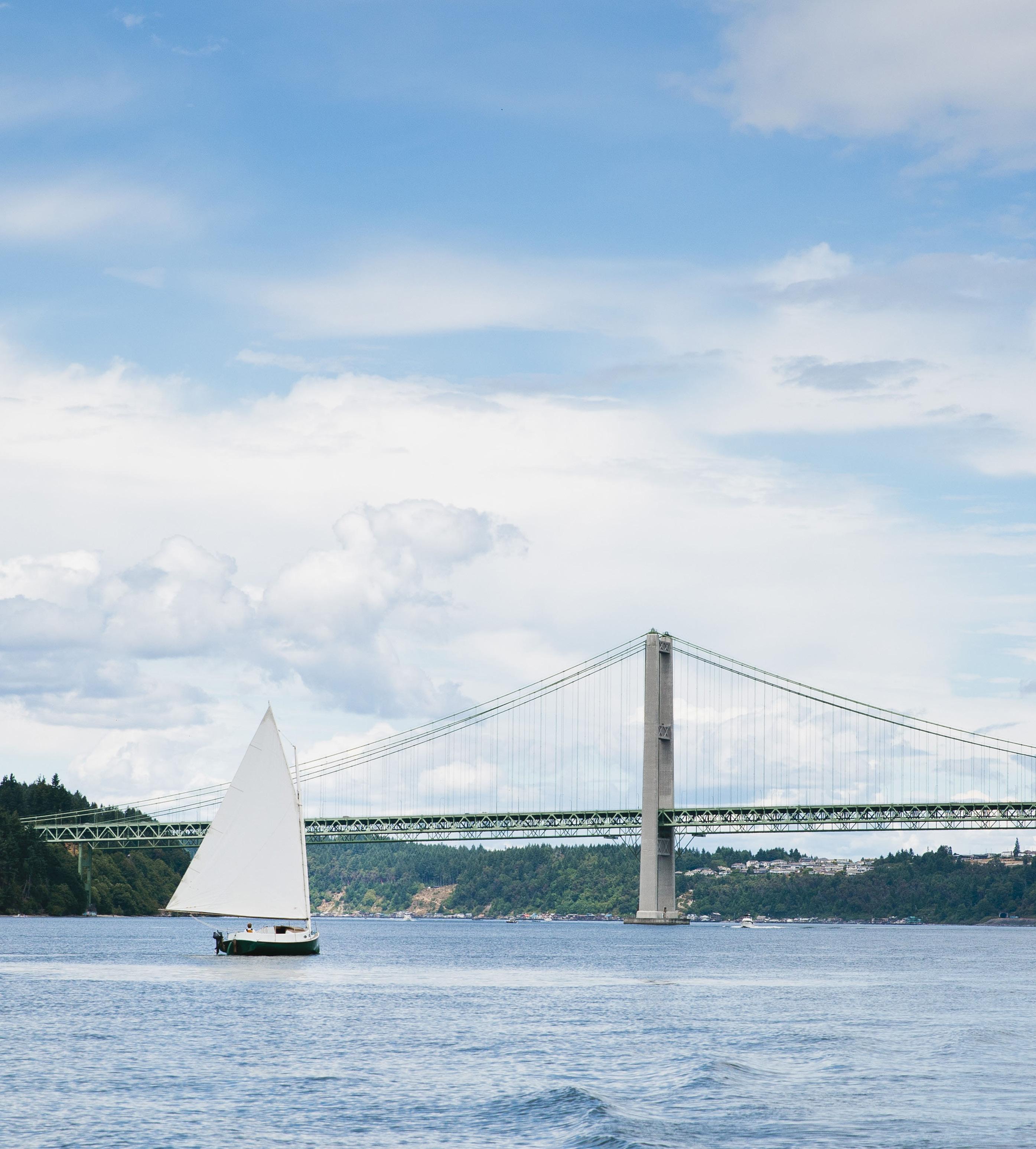
We must respond immediately to climate change and our actions must be BOLD.
Pierce County is committed to building a sustainable future for current and future generations. As climate change intensifies, bringing more wildfires, extreme heat, flooding, and harm to public health and local ecosystems, we are responding with bold, local solutions.
Local initiatives play a critical role in reducing greenhouse gas (GHG) emissions and strengthening our resilience to climate impacts. By tailoring strategies to our unique needs and involving community members directly, we drive meaningful change more effectively than broader national efforts alone.
First adopted in 2021, Sustainability 2030 ("the Plan") is a science-based roadmap that aligns with Washington State’s climate goals and aims to cut emissions 45% by 2030 (from a 2015 baseline) while also increasing community and ecosystem resilience to climate impacts.
The Plan is separated into two groups of actions: 1) Those designed to reduce community emissions and strengthen resilience, and 2) Those that address emissions and resilience of internal County operations. Actions are organized into the following broad focus areas:
+ Energy and Buildings
+ Transportation
+ Waste Reduction
+ Nature-based Climate Solutions
+ Education and Outreach
+ Growing Community Capacity
+ County Buildings and Fleet
+ Commute Trip Reduction
+ County Waste System
+ County Lands and Resources
+ Employee Education and Equitable Practices
This Plan is a living document, and revisions are made at least every two years. This 2025 update refines and revises actions based on our progress made to-date, new opportunities we see on the horizon, and things most important to our communities. We also report on ongoing resources and programs that are driving emissions reductions in Pierce County, and introduce the concept of broad, ongoing climate action strategies that will carry through beyond this update.
The Sustainability 2030 Plan is driven by community engagement, local innovation, and ongoing collaboration between County departments, community partners, residents, and businesses to reach our GHG emissions reduction goal. Together, we can lead on climate action—right here, right now.
As Pierce County works with our community and partners to take action on climate change, there are many opportunities to achieve additional benefits. These are often referred to as “co-benefits.” For example, increasing the energy efficiency of a home helps reduce greenhouse gas emissions but can also achieve the following co-benefits:
• Improved outdoor air quality
• Improved comfort and indoor air quality
• Reduced energy costs for the resident
• Increased local job opportunities in home improvement and heating and ventilation services
By centering co-benefits in our Sustainability 2030 Plan actions, we can address key community concerns like affordability, housing, and environmental quality, contributing to overall quality of life for Pierce County communities.
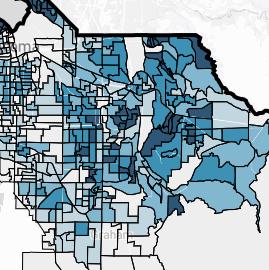
Frontline communities are those who face historical and current inequities in multiple ways, whether by being confronted with systemic barriers, being historically underserved, or both. These communities include those who are and will be disproportionately burdened by climate change, often experiencing the first and most acute impacts.
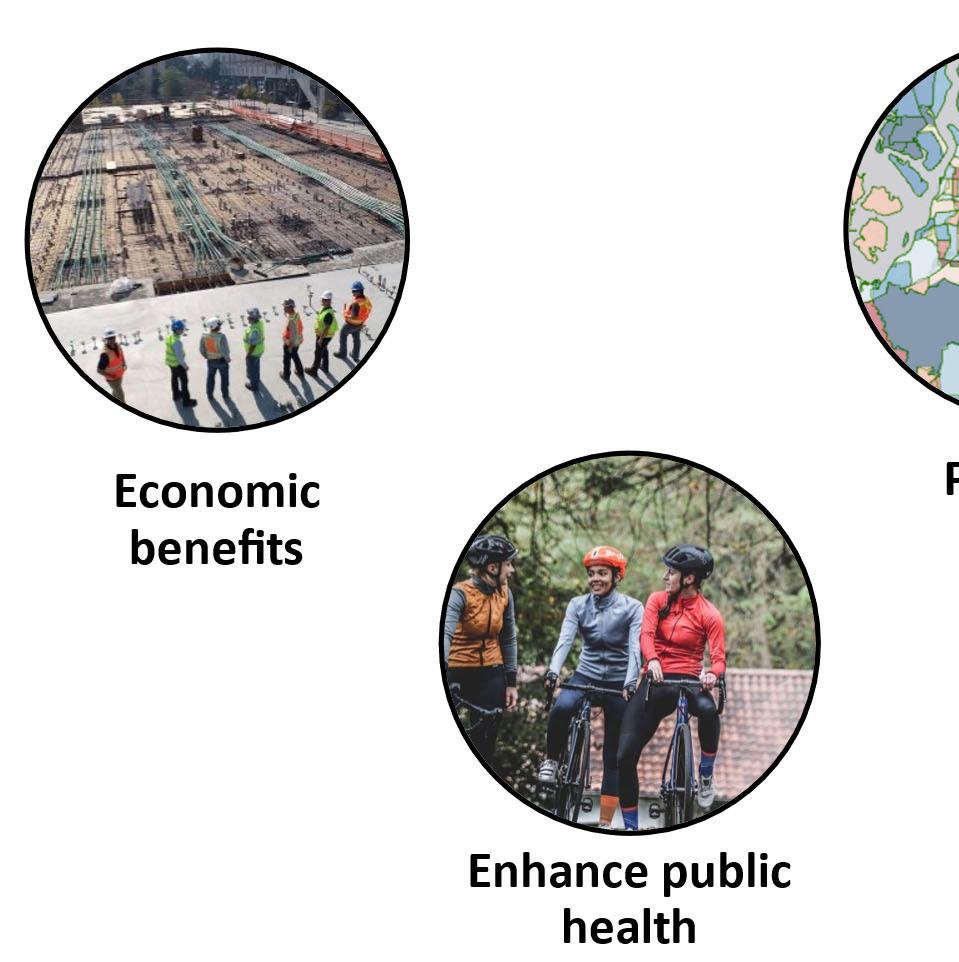
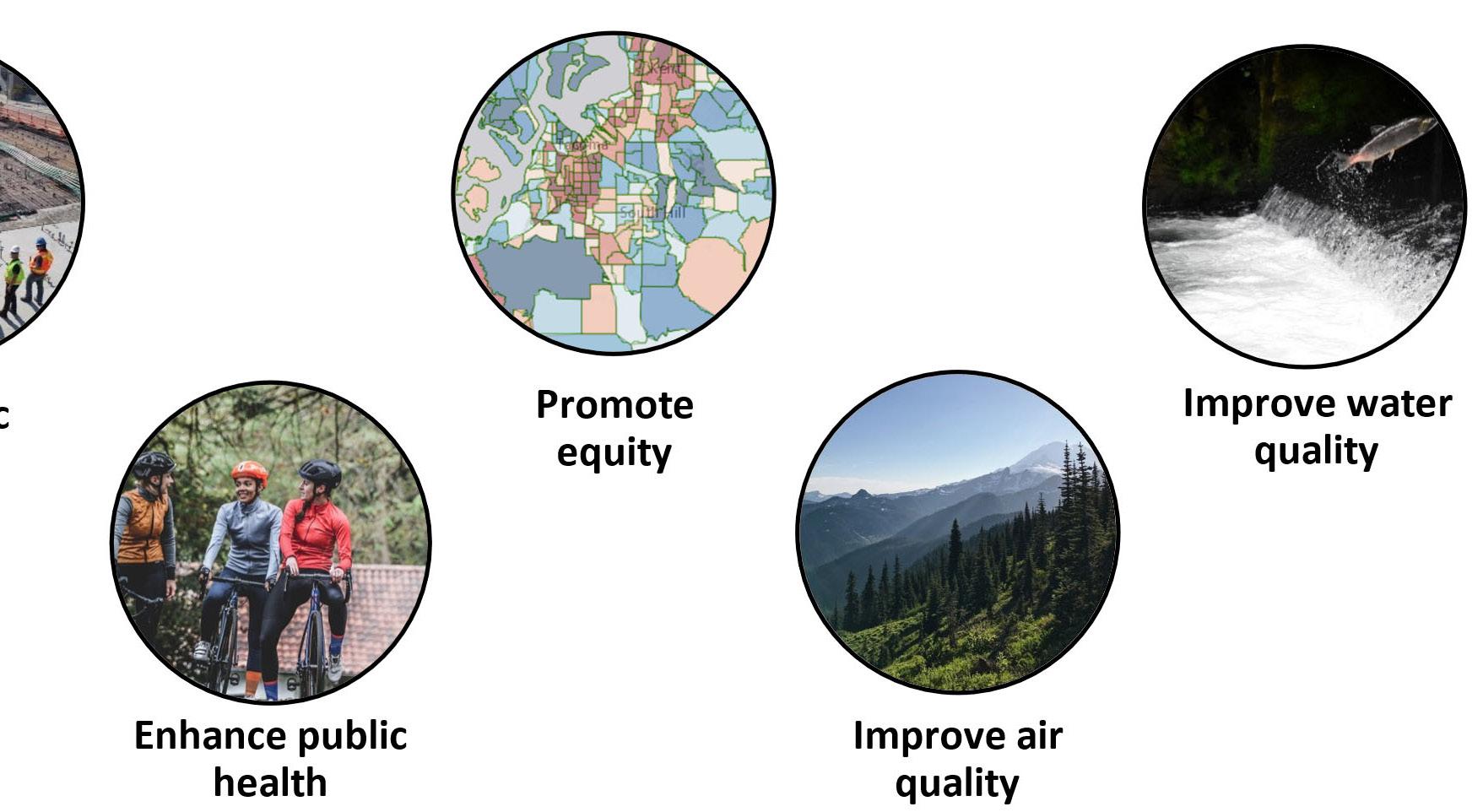
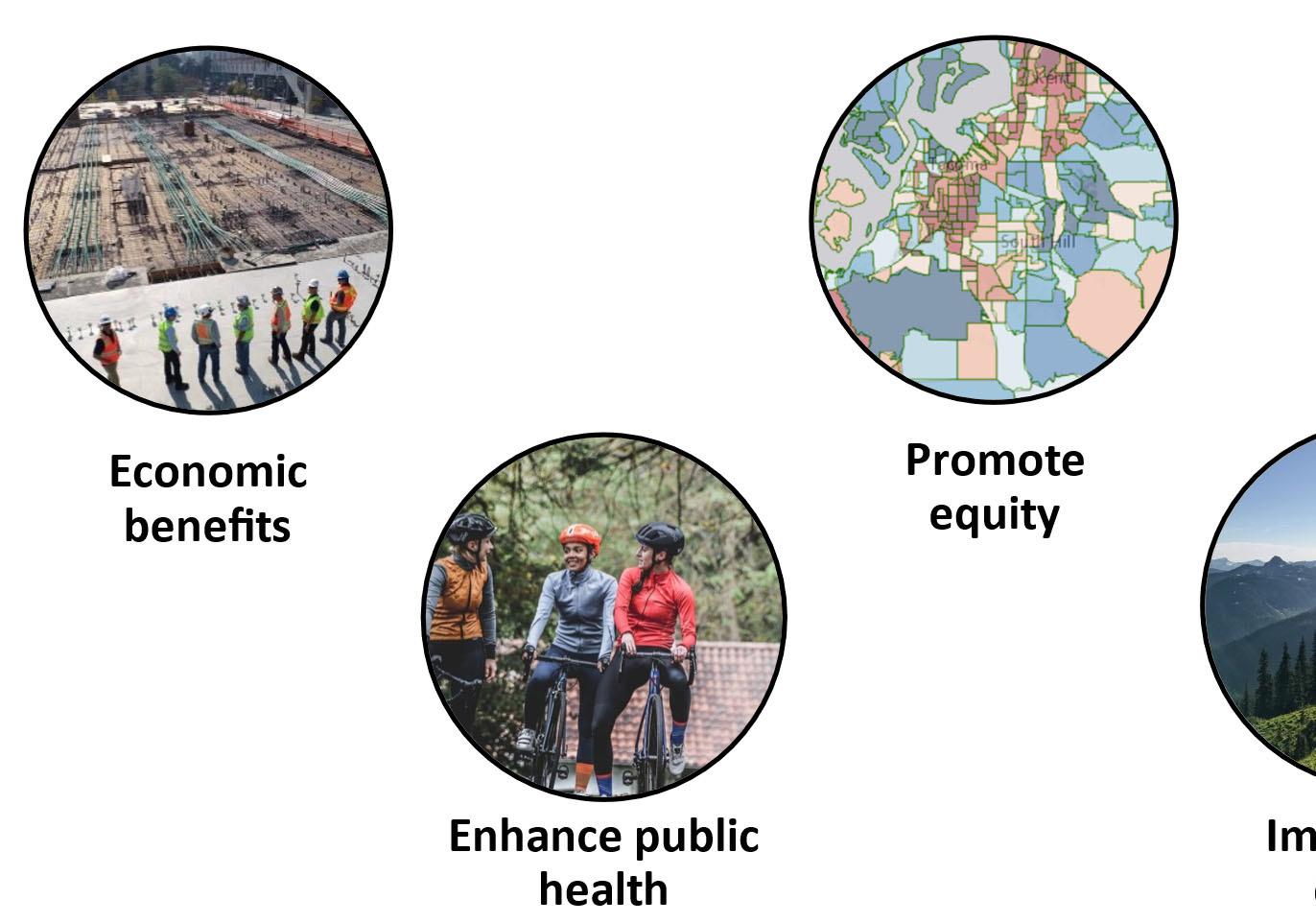
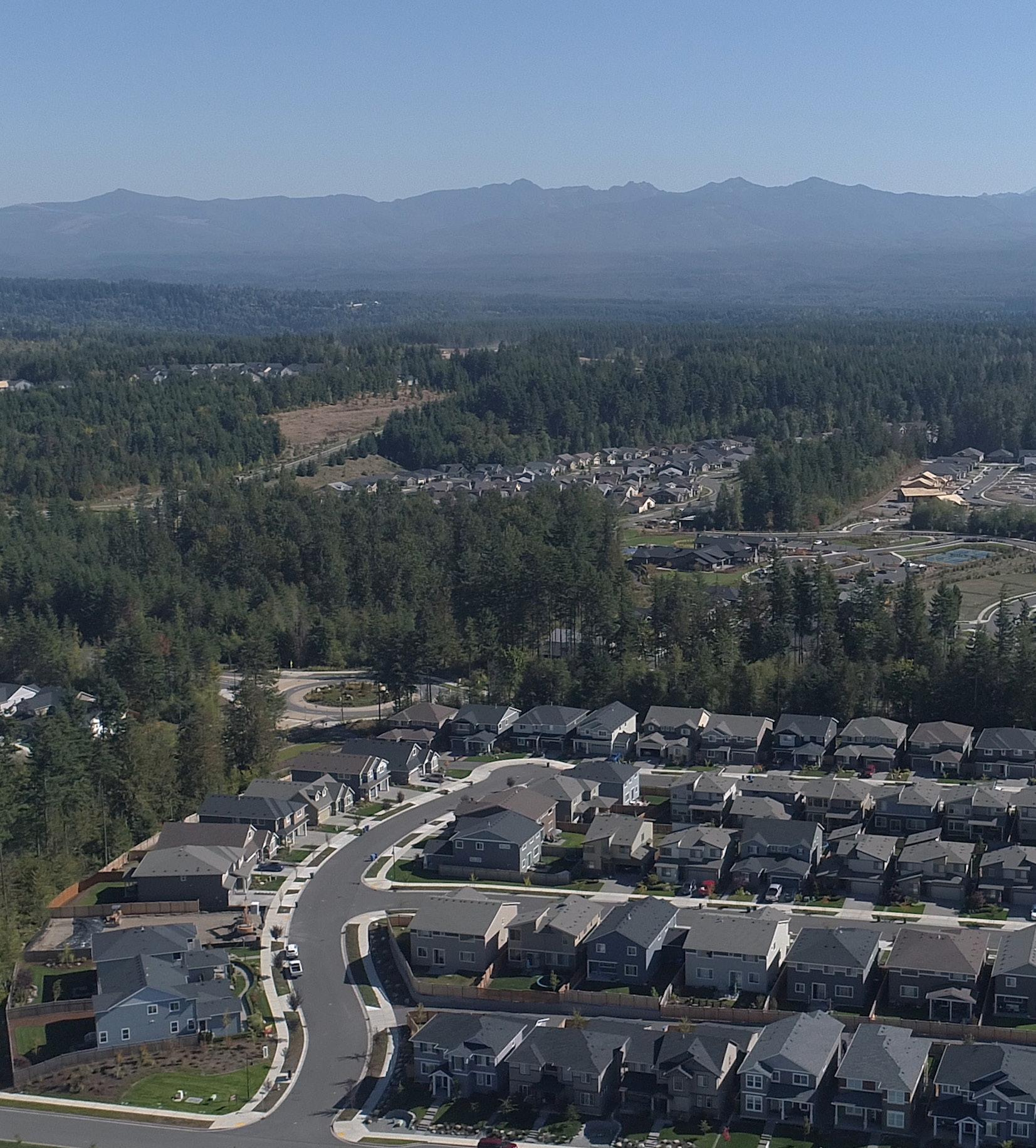
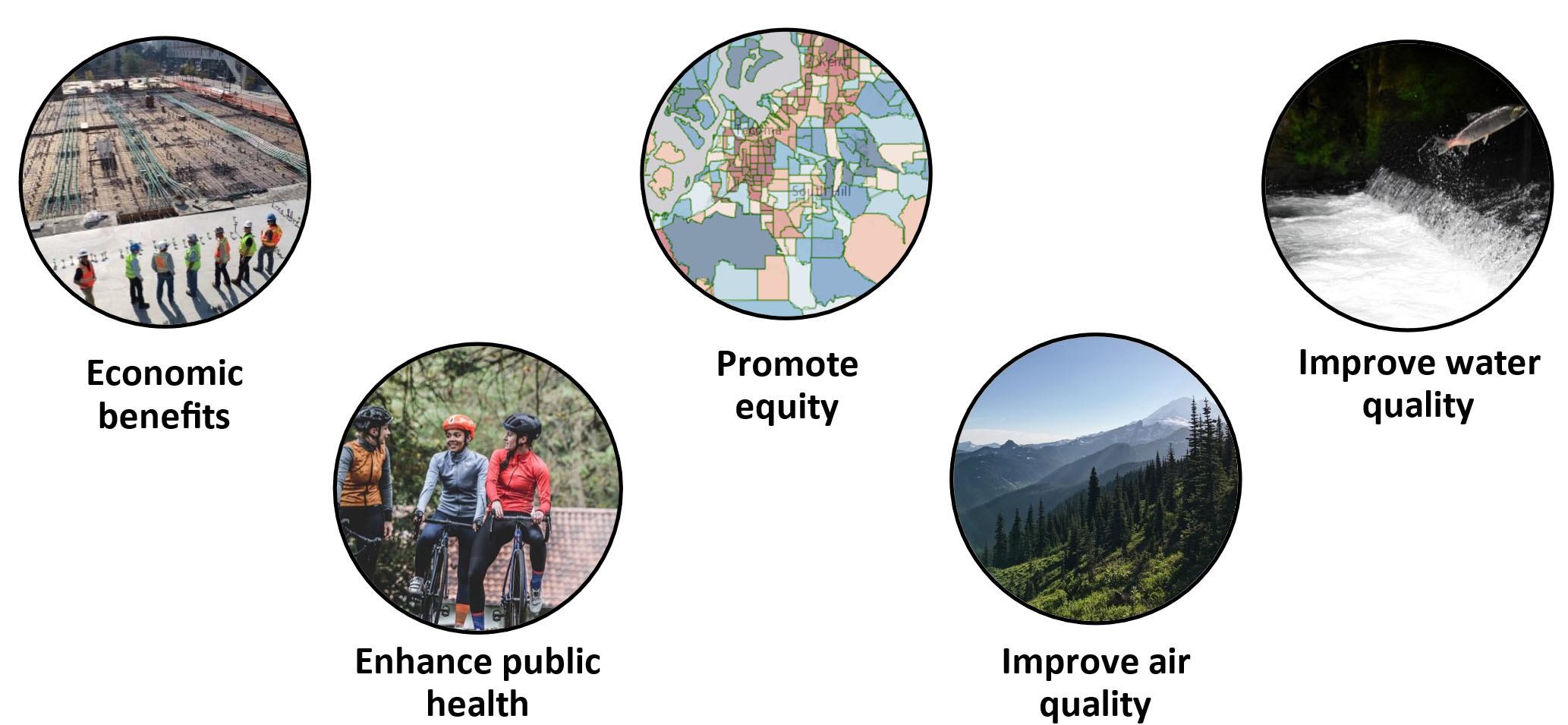
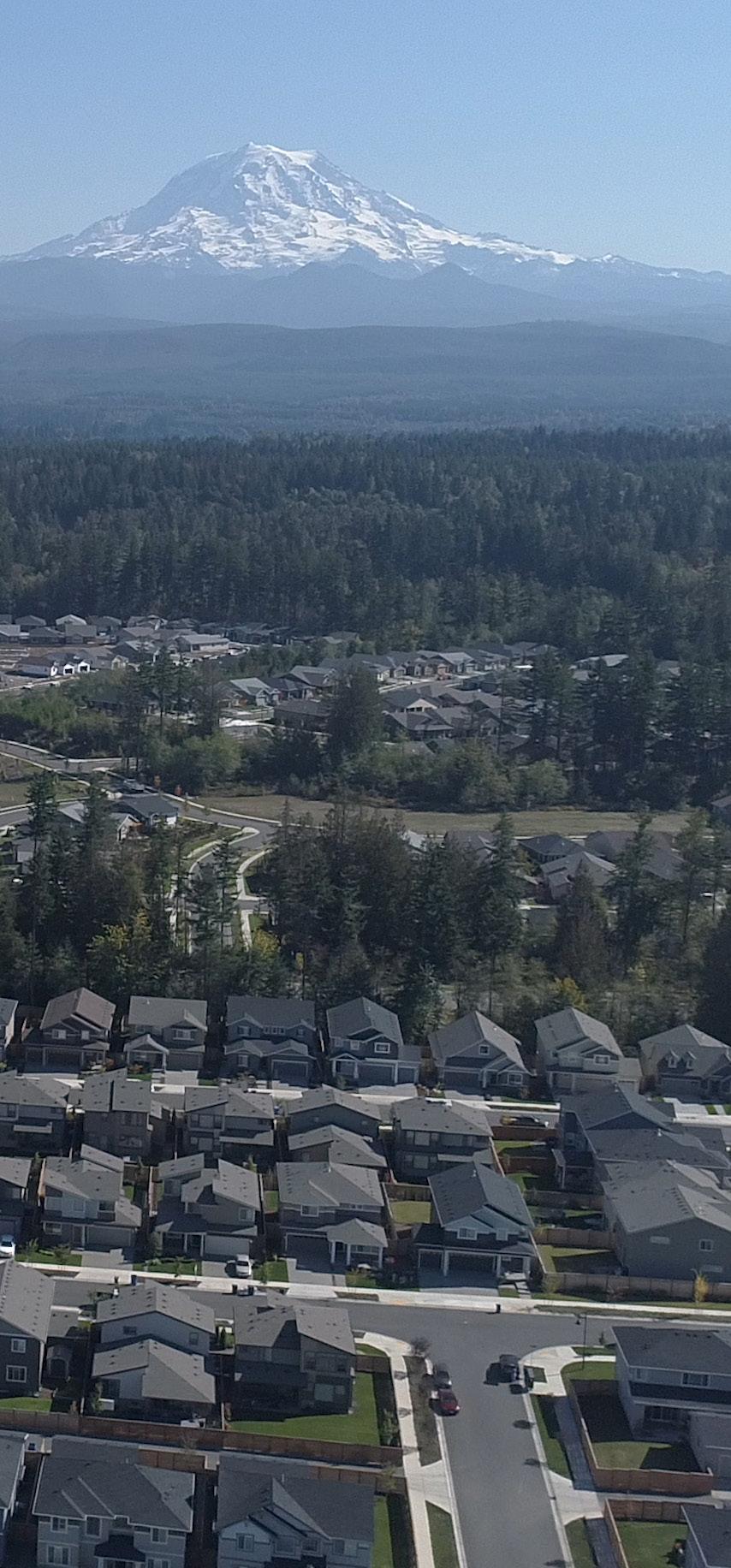
While we all experience the impacts of climate change, communities are not all affected equally. Pierce County recognizes the importance of ensuring frontline communities are included in the prioritization, implementation, and future updates of Pierce County’s Sustainability 2030 Plan so that the benefits of greenhouse gas reduction are equitably distributed and experienced by all.
In 2023, our team created an Equitable Community Engagement Framework to outline best practices for community engagement. One aspect of the framework is to align our work with our community’s priorities. This took shape with the creation of Community Priority Actions; or actions that most directly reflect community feedback. These actions are identified with an icon. The Sustainability 2030 team is prioritizing implementation of these actions, and Equity Assessment summaries for each will be included in the 2025 Annual Report. Additionally, desired equity outcomes for Plan strategies are listed on page 11.
Equity assessments aim to identify and eliminate unfair and unjust circumstances by collecting and analyzing information to understand how a practice, policy, or program might hinder or support positive outcomes for each member of the community. Equity assessments allow for deep examinations of the root causes of inequities –race, income, ability, language, and more – so that we can design just and effective solutions for all.
The Pacific Northwest is getting warmer, and Pierce County is feeling the effects. We’re seeing more frequent and extreme heat, heavier rainfall and flooding, increased wildfires, and a warmer, more acidic Puget Sound. These changes place stress on our communities, ecosystems, and economy. Throughout the Sustainability 2030 Plan, you will find new actions that help prepare and strengthen our communities and ecosystems against climate impacts.
People without access to air conditioning or stable housing are especially at risk during heatwaves and wildfire smoke events.
Resilience means preparing for and adapting to these climate impacts, which are not evenly distributed across Pierce County. Communities in eastern areas are more vulnerable to wildfires, while those in floodplains or along shorelines face greater flood risk. An individual’s health and housing conditions, relative economic security, and ease of access to resources also affect their vulnerability to climate impacts.
We’re hearing more from clients about needs for air conditioning.”
– Community Dialogues participant
I had to put a wet towel on my body just to sleep through the night.”
– Youth Climate Café participant “
Parents working in the field are most impacted. In the Summer, we have to give them cooling bandanas and gloves. Their workplace doesn’t give them proper personal protective equipment."
– Community Dialogues participant (Latinx Family Advocacy Program)

Rising water temperatures, reduced stream flows, and increased runoff from flooding and erosion put salmon at risk. “
Harmful algal blooms (HABs) really scare me. My dog got sick after playing in the Columbia River before we really knew about benthic, non-visible algae.”
– Front and Centered Watch Party participant
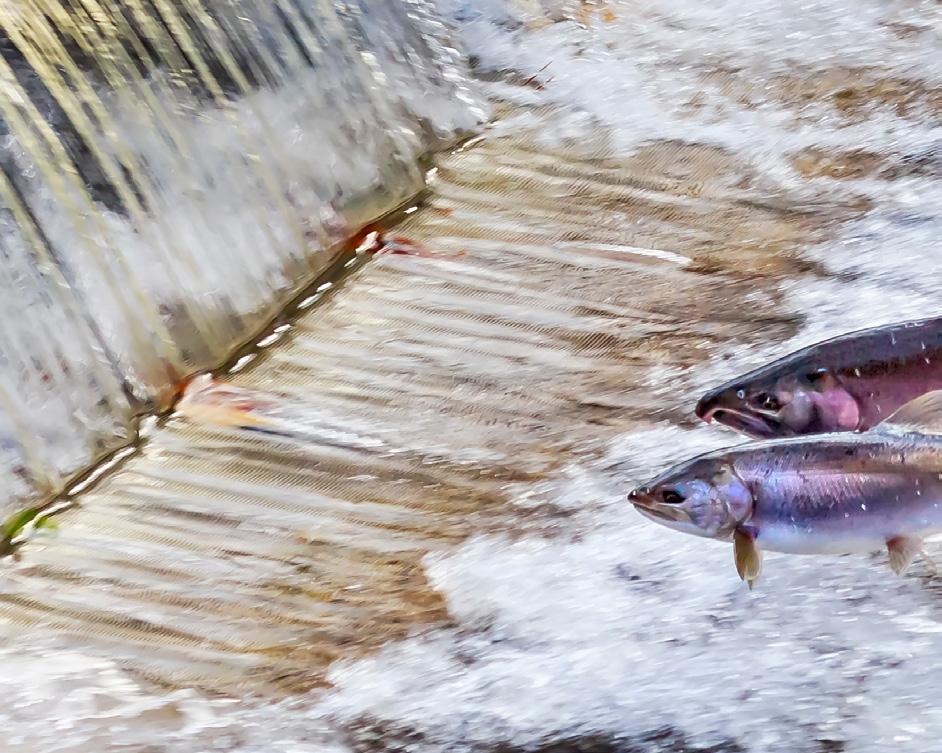
Pierce County completed a Climate Vulnerability Assessment in 2023 to help County staff and the general public better understand:
• How climate and weather patterns are expected to change in Pierce County.
• Which communities and County facilities are most vulnerable to changing conditions.
• What policies and investments could protect vulnerable community members.
Learn more about climate change and its impacts in Pierce County here.
The same climate threats that affect people also disrupt wildlife and natural systems in Pierce County. Warmer, drier summers lower stream flows and raise water temperatures, causing stress to aquatic life and creating an environment for harmful algae blooms. Flooding pollutes wetlands, waterways, and nearshore areas, while hotter conditions cause tree die-offs, increasing wildfires and landslides. Changing environmental conditions endanger habitats of native animals and plants, upsetting the natural balance of local ecosystems.
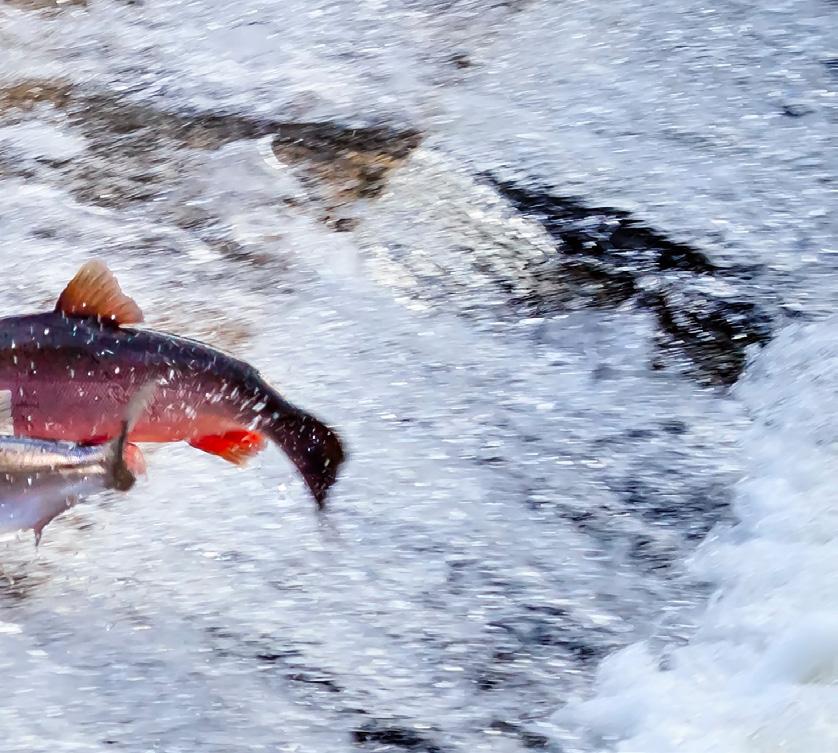
Climate impacts are driving up costs through damage to infrastructure, increased healthcare needs, and disruptions to important industries.
The local economy is also vulnerable: agriculture, tourism, fishing, and forestry are all at risk. Damage to roads, bridges, powerlines, and water systems from climate-related disasters creates expensive challenges for residents and public agencies. Households and businesses face rising costs for cooling, healthcare, upgrades, repairs, and insurance.
Strengthening our community’s resilience means strengthening our capacity to adapt, especially for those most at risk, and ensuring our communities, environment, and economy can withstand and recover from these growing challenges. A resilient Pierce County is one where everyone has the opportunity to thrive, even as our climate changes.
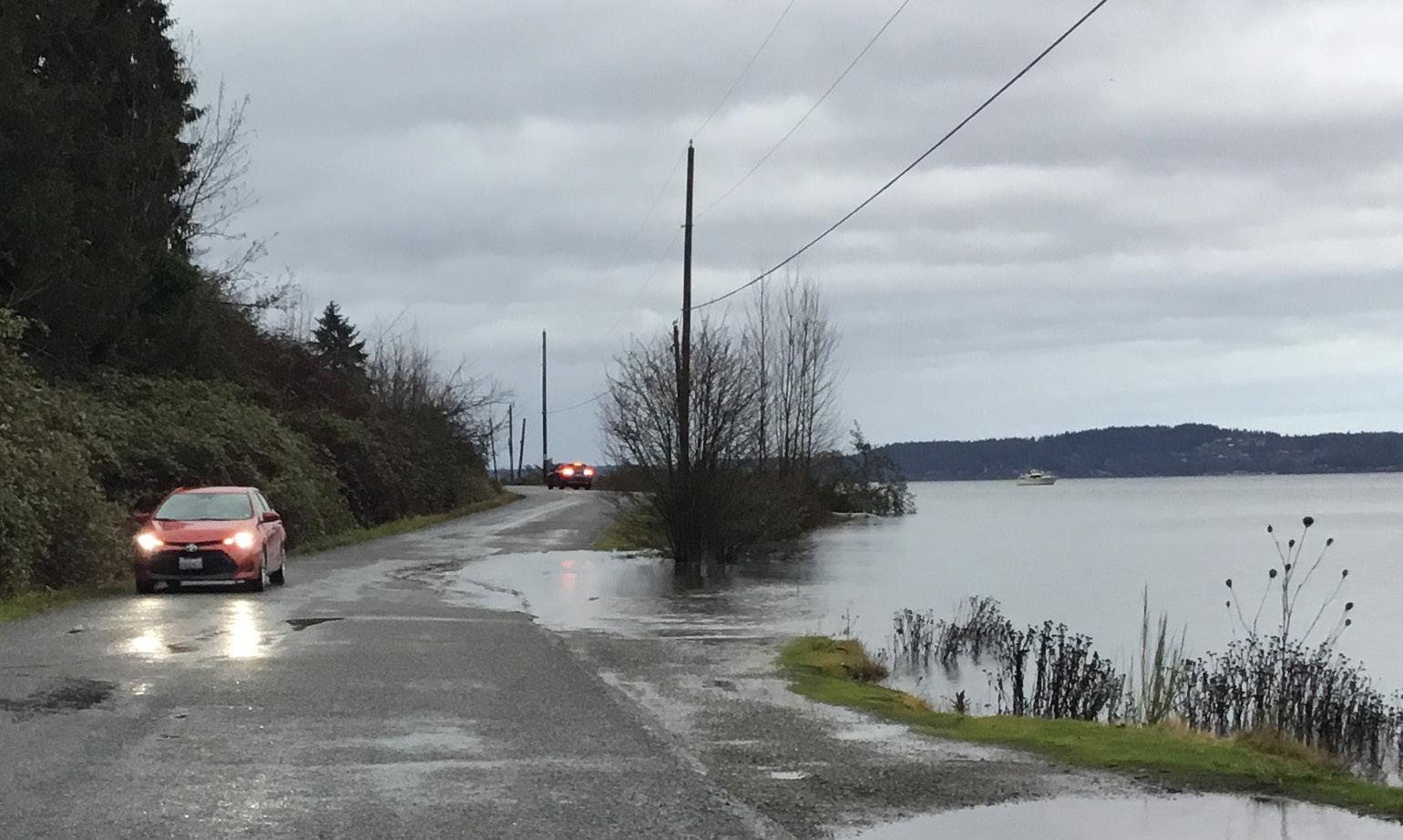
“
When we’re talking about inclement weather, we’re not recognizing that even thoough changes might seem small, their cumulative effect can be worse. Six months of rain now is much deadlier than it was a few years ago.”
–
A greenhouse gas (GHG) inventory shows where emissions come from—like heating buildings, driving, and cutting down trees—so we can design actions to reduce emissions. Using standardized methods, inventories measure emissions by source each year. Geographic inventories focus on emissions within local boundaries, while consumption-based inventories include upstream emissions from producing goods we use. Pierce County uses a geographic inventory to track local progress, but promoting sustainable choices can also reduce broader consumption-related emissions and strengthen community resilience.
The Sustainability 2030 Plan focuses on actions that reduce emissions occurring within the geographical boundary of Pierce County and support more sustainable consumption habits.
Pierce County uses a 2015 GHG emissions inventory baseline to measure progress on the Plan, relying on collaboration with regional and state partners to ensure inventory updates use consistent methods over time.
In 2025, Washington State Department of
Commerce provided a new GHG inventory for 2022 emissions. Preliminary findings suggest emissions in 2022 were slightly lower than in 2019 but still off track for meeting the 2030 goal. An updated 2022 GHG inventory is expected by the end of 2025.
To meet the County goal of reducing communitywide GHG emissions 45% by 2030, our community-based actions focus on using 100% clean and renewable electricity, electrifying buildings and transportation, expanding low carbon transportation options, reducing food waste, protecting and planting trees, and conserving land. As Pierce County works to reduce GHG emissions, there are many additional opportunities to make our communities more resilient to climate impacts and raise up partners in this work. We cannot achieve sustainable, livable communities on our own.
The following sections detail actions to reduce GHG emissions, improve community resilience, and involve more hands in climate action across six community focus areas: energy and buildings, transportation, waste reduction, nature-based climate solutions, education and outreach, and growing community capacity.
Most of our communitywide GHG emissions come from heating residential and commercial buildings, driving gas-powered vehicles, and removing trees to develop land. For more information about Pierce County’s communitywide GHG emissions, visit our latest Geographic GHG Inventory here.
From 2015 to 2019, our regional emissions increased by about 16%.
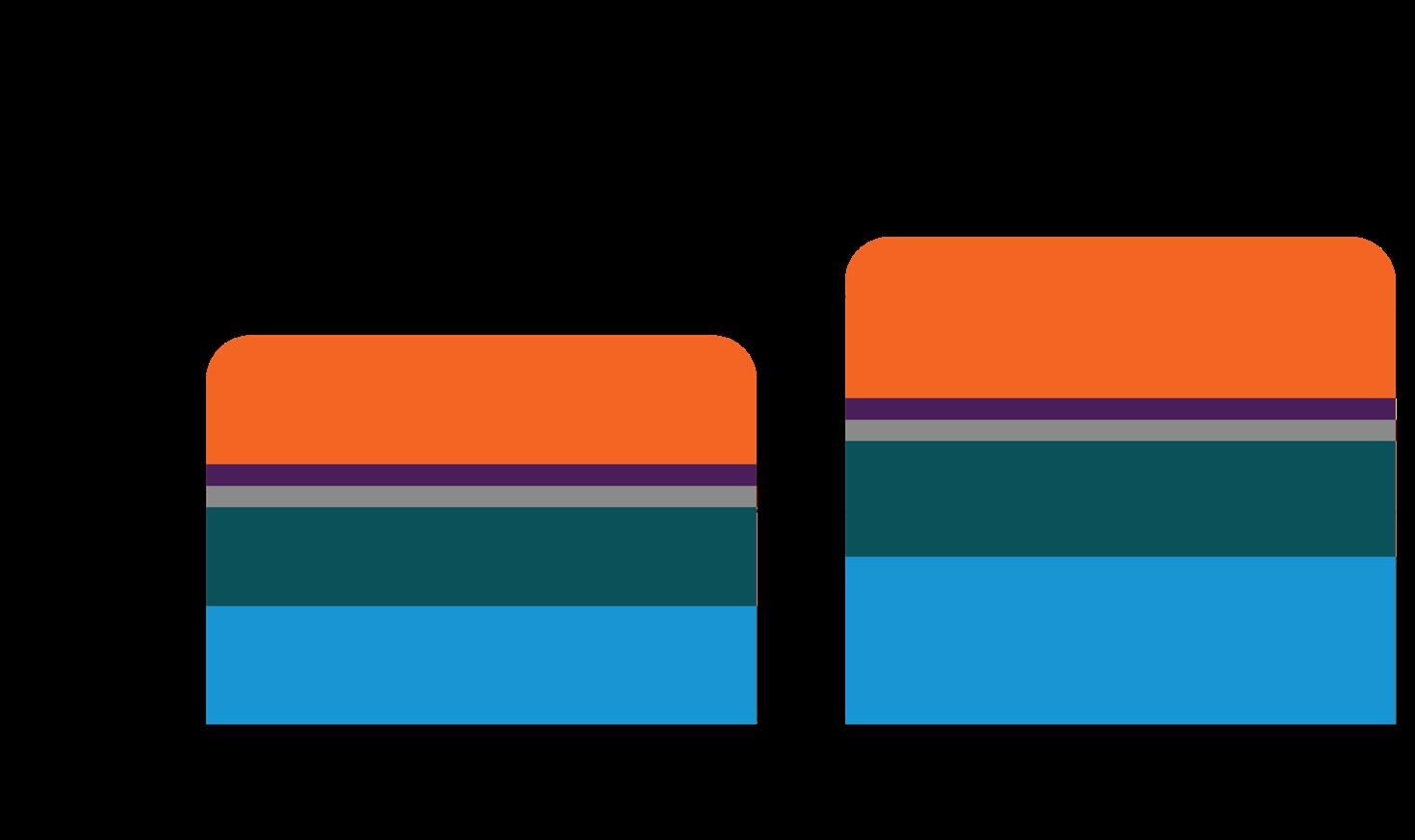
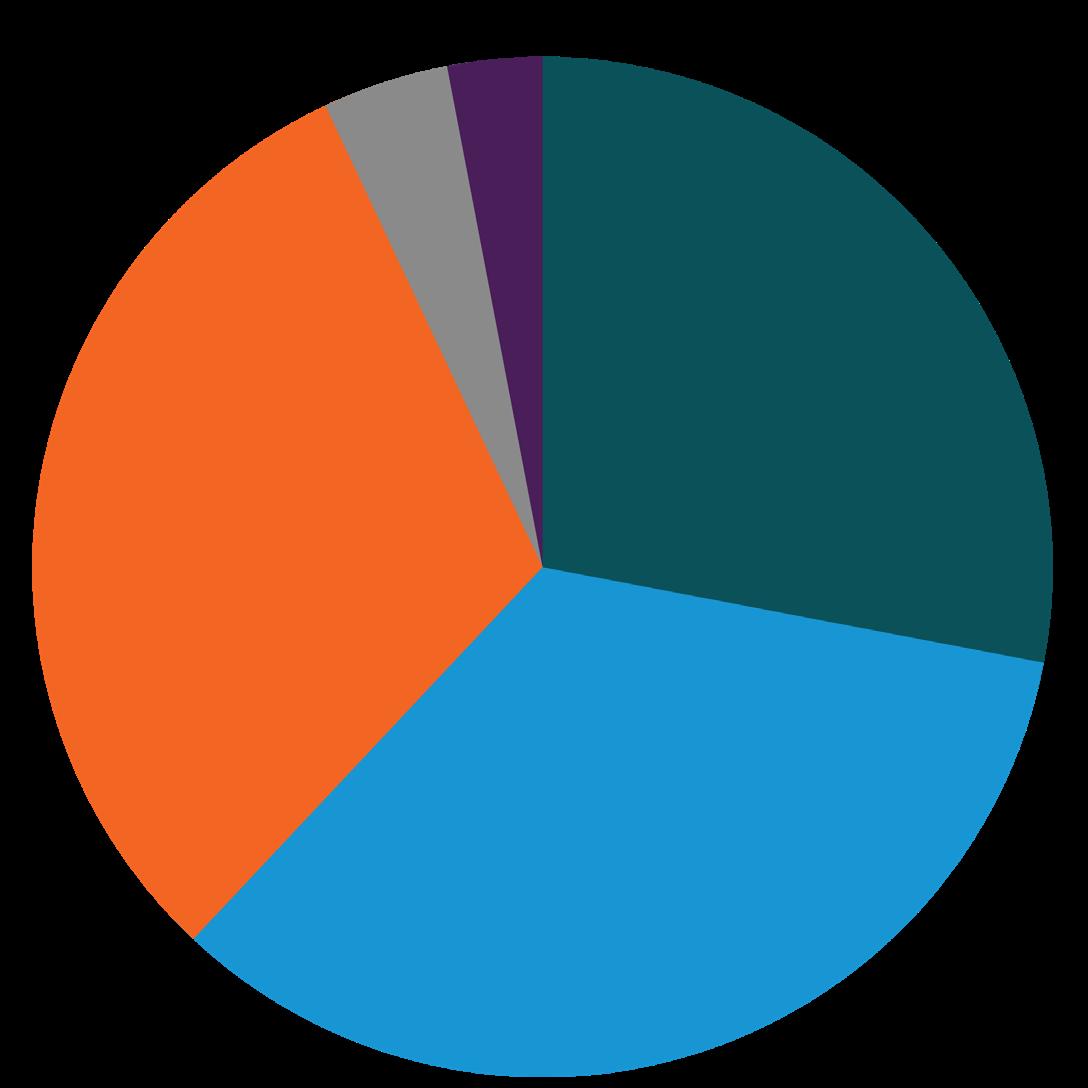

As of June 2025, 21 of the actions adopted during the 2023 Update have been completed, and another 5 are expected to be complete by the end of 2025 or in early 2026. Significant progress has been made on 33 actions, while just 5 actions have not yet been started. A detailed status for each 2023 Update action can be found in Appendix A.
Most in-progress and not-started actions from the 2023 Update have been refined and revised based on community and staff feedback during the 2025 Update process. We are also adding 24 new actions to the Plan for 2026-2027 with an emphasis on:
• Conserving land
• Protecting forests
• Enhancing resiliency and preparing for climate change impacts

• Strengthening our green economy
• Creating opportunities for community leadership in climate action
To learn more about past progress on the Sustainability 2030 Plan, visit our Annual Reports webpage, and look for ongoing programs and resources snapshots throughout this 2025 Update.
47 total actions were completed since 2021.
The 2023 Update to the Sustainability 2030 Plan gathered broad community feedback from Pierce County residents at a variety of outreach events and community meetings, and more focused feedback from community partners based on their organizations’ area of interest and expertise. For the 2025 Update, we followed up with the same community partners. We also spoke with many new organizations and agencies that serve Pierce County residents and whose missions intersect with the emissions reduction and climate resilience goals of Sustainability 2030. By connecting with organizations and agencies that serve frontline community members, Community Dialogues help us better understand issues and concerns of Pierce County residents, design climate solutions with the needs of our community in mind, and identify opportunities for collaboration.
The last Update featured a list of communitygenerated Plan actions, also known as Community Priority Actions. These actions have been refined for the 2025 Plan Update and further reflect community feedback. Each Plan Focus Area features a Community Voice section which lists broad themes we heard during our engagement period, as well as supporting quotes.
We heard many impactful and creative ideas from Pierce County communities during the update process. Many of these ideas are reflected in new actions or edits to existing actions in the Plan; others will guide future updates to the Plan beyond the 2026–2027 biennium. In Appendix B: Gathering Community Voices (page 70), you can read detailed about community feedback and learn about our community engagement process.

It’s happening! Pierce County Planning & Public Works has been awarded funds to construct a largescale solar innovation project on the site of the closed Purdy Landfill. Just under 1-megawatt, this solar array will generate clean energy and help fund energy assistance and efficiency projects benefitting lowincome residents on Key Peninsula.
To learn more about Community Priority Actions and progress on these actions so far, visit the Community Priority Actions webpage.
Pierce County’s Environmental Education team has a long track record of supporting and amplifying youth voices in sustainability planning and decision-making processes. During Earth Month 2025, the Youth Engaged in Sustainable Solutions (YESS) Climate Summit took place at Pierce College-Fort Steilacoom with a special guest – Pierce County Executive Ryan Mello! Through engaging workshops, high school and middle school youth explored how their identity shapes their experience of climate change and how they can use their unique perspective to take meaningful steps towards climate action in their own ways. Learn more about YESS and the annual Youth Climate Summit here.

This update to Sustainability 2030 introduces the concept of broad climate action strategies to guide our work, today and in the future. These strategies represent our most impactful opportunities to reduce greenhouse gas (GHG) emissions and increase resilience to climate
Achieving a low or zero-carbon footprint for buildings through a combination of methods, including electrification, energy efficiency improvements, and renewable energy.
Transitioning heating and cooling systems and appliances from fossil fuels to electricity and improving energy efficiency through weatherization measures.
Adopting policies that support renewable energy projects, promoting public awareness of and participation in renewable energy incentive programs, and investing in local partnerships to promote renewable energy initiatives.
Expanding safer and more convenient bicycle and pedestrian infrastructure, developing policies that promote walking and biking, supporting telework, rideshare, and carshare options, promoting compact and mixed-use development and parking policies that make shared and active travel modes more attractive & useful.
Supporting investment in frequent and reliable public transportation options, encouraging transit-oriented community development through land use decisions and regulations, and educating community members on low-carbon travel modes.
Supporting the development of public and private electric vehicle (EV) charging infrastructure, working with partners and residents to identify gaps in service and strategic locations for investment, and transitioning to lowcarbon fuels for aircraft, ships, and equipment.
impacts in Pierce County, but each will take ongoing effort, resources, and creativity to implement. Each successive plan update will include new actions that move us closer to a healthy, sustainable, low-carbon future. While most strategies are specific to a focus
area of climate action, some strategies cut across all focus areas. Below you will see that “grow our green economy” and “build resilient communities” are cross-cutting strategies that must be integrated across all work we do to implement the Plan.
• New affordable and low-income housing and commercial spaces are energy efficient, healthy environments.
• Existing affordable and low-income housing and commercial spaces provide reduced energy costs and cleaner indoor air quality.
• Occupants can afford to stay in their neighborhoods and communities of choice.
• Moderate and low-income households experience lower energy burden through access to clean, affordable power.
• Frontline communities are prioritized for and involved in decision-making regarding clean energy investments.
• Residents of all ages and abilities have safer, lower-cost travel options that improve health outcomes and improve air quality in communities overburdened by pollution.
• Rural and otherwise underserved communities gain reliable, affordable access to transit that connects them to jobs, education, and services.
• Low-income communities, renters, those overburdened by air pollution, and rural residents that lack public transit options have access to EV charging infrastructure.
Preventing unnecessary consumption, reducing packaging, requiring producers to take back products, repairing products in use, and creating alternative markets for materials that would otherwise be wasted.
Protect, connect & restore
Increase youth engagement in climate action
Increase community engagement in climate action
Increase employee engagement in climate action
Providing education and outreach to residents, businesses, and schools to recycle right and keep food out of the landfill. Creating new programs and updating codes and other requirements that increase access to recycling and composting.
Transition waste collection fleets and facility equipment to electric or low-emission alternatives, and invest in landfill methane capture and utilization where applicable.
Conserving and connecting existing ecosystems like forests, wetlands, coastal areas, and urban green spaces as well as restoring degraded lands to enhance their carbon storage, biodiversity, and resilience.
Practices that improve soil health, water availability, and overall landscape resilience in both working and natural landscapes through agroforestry, rainwater harvesting, and watershed management.
Enhancing and maintaining urban green infrastructure, like parks, street trees, greenways, and green roofs, to reduce urban heat, manage stormwater, support biodiversity, and improve public health.
Ensuring that nature-based solutions also provide benefits to communities, such as improved livelihoods, cultural values, food and water security, and overall quality of life.
Providing school programs, internships, and leadership opportunities that connect youth to local climate solutions.
Providing accessible opportunities for residents to learn about climate challenges and solutions and get involved in hands-on projects and decision-making.
Enhancing staff capacity to take climate action by providing sustainability and equitable community engagement trainings.
• All residents, especially low-income and English language learners, have knowledge of and ready access to repair and reuse systems.
• All residents, especially low-income and English language learners, have knowledge of and ready access to recycling and composting programs.
• Communities along collection routes and near waste facilities experience improved air quality and reduced emissions from waste operations.
• All residents benefit from ongoing and improved ecosystems services (clean air & water, flood protection), especially those residing in low-income communities adjacent to degraded lands.
• Low-income and otherwise marginalized residents are included in decision-making regarding restoration projects and are not displaced by conservation efforts.
• Small farmers and rural land stewards can utilize sustainable management practices without adverse economic effects.
• Urban neighborhoods experiencing the heat island effect (UHI) gain access to cooler, greener, healthier environments that support physical activity and community gathering spaces.
• Residents of all backgrounds, especially those from marginalized communities, have opportunities to connect with nature and benefit from ecosystem services.
• Marginalized youth have what they need to be meaningfully involved in programs that address climate change and mental health.
• Community workshops are influenced by community priorities.
• Frontline communities are meaningfully involved in the development, facilitation, and participation of these workshops.
• Staff in all departments and divisions understand how their work affects frontline community members, and take steps to avoid and/or remedy disproportionate harms to those residents.
Facilitating collaboration among jurisdictions, community groups, and experts to share best practices and amplify impacts.
Investing in emerging and established community leaders through training, funding, and mentorship opportunities.
Supporting local partners, organizations, and businesses that are advancing climate resilience and sustainability in their communities.
Deepening partnerships with Tribal Nations through relationship-building and co-creation of initiatives rooted in Indigenous leadership and priorities.
Training, reskilling, and attracting individuals to jobs in renewable energy, energy efficiency, green stormwater infrastructure, and other green industries.
Preparing infrastructure and neighborhoods to withstand current and future climate impacts through proactive planning, retrofits, and nature-based solutions to reduce risks from extreme heat, flooding, wildfire smoke, and other hazards.
• Partnerships, engagement opportunities, and avenues for Plan collaboration are accessible to all.
• Frontline community members have what they need and are empowered to lead and contribute to climate solutions.
• Community priorities are integrated in Plan strategies to support community-led action.
• Tribal members have access to traditional and cultural resources.
• Tribal treaty rights are upheld, and tribes actively co-manage resources with other governments.
• Frontline community members and those with barriers to employment are well resourced to work in green jobs.
• Workforce development programs offer wrap-around services to remove barriers to employment.
• Frontline community members are directly involved in the development of climate resilience solutions.
• All communities have what they need to prepare and recover from the impacts of climate change.
Comms = Communications
DEM = Department of Emergency Management
HR = Human Resources
LRP = Long Range Planning
ORCA = Office of Resilience and Climate Action
OCE = Office of the County Engineer
PPW = Planning and Public Works
SWM = Surface Water Management
TPCHD = Tacoma-Pierce County Health Department
Washington’s Clean Energy Transformation Act (CETA) is helping shift our electricity supply towards clean, renewable sources like solar and hydropower. However, in Pierce County, burning fossil fuels like coal, methane (natural) gas, and oil for heating and cooking in our homes and offices continues to generate a large amount of pollution. To reach our emissions reduction goals, it’s essential that our residents and businesses have opportunities to increase the energy efficiency and climate resiliency of new and existing buildings through measures like improving insulation, installing efficient electric appliances and systems, and designing or retrofitting buildings to withstand future climate impacts.
EB Action 1 Development Decarb: Establish an incentive and education program that encourages new development to go all electric and use lowcarbon construction techniques (e.g. low-carbon concrete, mass timber, salvage materials).
EB Action 2 Regional Collaboration: Work with regional partners to identify naturally occurring affordable housing units and implement a multi-family and community building technical assistance and energy efficiency retrofit program.
EB Action 3 Residential Heat Pump Pilot: Pilot a program that makes it easier for homeowners to purchase and install heat pumps for space and water heating and develop a peer-to-peer energy coaching program.
EB Action 4 E&B Resources: Connect residents and business owners with weatherization and electrification resources and incentive programs, including landscaping equipment.
EB Action 5 Community Solar: Invest in or partner on community solar projects that demonstrate clean energy solutions and help lower energy costs for priority communities.
EB Action 6 Residential Solar Pilot: Pilot a group-purchase program that makes it easier and cheaper for property owners to install residential solar panels and/or battery storage systems.
EB Action 7 Reward Resilience: Incentivize resilient development by lowering fees or speeding up permits for projects that include nature-based climate solutions (e.g. green roofs, green stormwater infrastructure, tree canopy) or energy resilience components.
EB Action 8 Extreme Heat Partnership: Work with partners to develop an extreme heat mitigation strategy to combat urban heat islands and keep residents safe during heat and smoke events.
EB Action 9 Resilience Centers: Help create or grow local centers that support communities during climate emergencies and improve their ability to recover and adapt.
EB Action 10 Buildings Workforce: Support local workforce training providers in delivering green job skills programs, like building retrofits and heat pump technology, with a focus on equitable access.
Lead: PPW - LRP Support: PPW - ORCA, PPWDevelopment Services.
Lead: PPW - ORCA
Lead: PPW - ORCA Support: Human Services
Lead: PPW - ORCA Support: Human Services, Comms.
Lead: PPW - ORCA Support: Facilities
Lead: PPW - ORCA
Lead: PPW - LRP Support: PPW -ORCA, PPWDevelopment Services
Lead: PPW - ORCA Support: Human Services, DEM, TPCHD
Lead: PPW - ORCA Support: Human Services, DEM
Lead: PPW - ORCA Support: Human Services, WorkForce Central
Transitioning to renewable energy, community solar projects, and increasing awareness of energy assistance programs and incentives are top community priorities.
Quotes:
“Home energy efficiency improvements are too expensive even for "middle class." It's not affordable to buy and get reimbursed when you can't buy.”
– Online survey participant
“As summers get hotter, more people in Tacoma suffer from limited air conditioning in older buildings.”
– University of Washington Tacoma interviewee
Established in 2022, Pierce County’s Commercial Property Assessed Clean Energy and Resiliency (C-PACER) program allows owners and developers of commercial, industrial, agricultural, and multi-family buildings to utilize an innovative financing mechanism to pay for qualifying efficiency and resiliency projects. In 2026 and beyond, the ORCA team will continue to work with regional C-PACER administrators to increase program awareness among local lenders and building owners and make the program easier to use for smaller retrofit projects.
In 2025, Pierce County received a Silver designation from the national SolSmart program thanks to the efforts of the Planning & Public Works Department's Development Services and Long Range Planning teams. By eliminating barriers to the installation of renewable energy projects, the County is helping shift energy generation to clean, local sources - saving money, reducing pollution, and increasing community resilience! In 2026 and beyond the ORCA team will take steps towards achieving higher SolSmart designations, like Gold or even Platinum, making it faster, easier, and more affordable for local residents, businesses, and nonprofit organizations to install solar in our community. Learn more on our solar energy webpage.
In 2021, the transportation sector was Washington’s largest source of greenhouse gas (GHG) emissions, and represents the biggest emissions increase since 2019. This trend holds true in Pierce County, where our heavy reliance on gasoline- and diesel-powered vehicles continues to drive pollution and climate impacts. Reducing emissions will require expanding access to public transit, building safer infrastructure for walking and biking, and supporting a transition to zero-emission vehicles. Equitable, accessible transportation options are essential for reducing pollution while improving daily life for communities across the county.
T Action 1 Transit Infrastructure: Work with Pierce Transit and Sound Transit to locate and permit bus stops convenient to bicycle paths and sidewalks.
T Action 2 Youth Transportation: Work with community partners to promote and expand outreach efforts to youth to increase awareness of and access to sustainable transportation and support services
T Action 3 Community Transportation: Work with community partners to educate residents and commuters on sustainable transportation options and provide tailored support services.
T Action 4 Increase Walking and Biking: Implement projects in the Pierce County Comprehensive Plan, Safe Routes to Schools Plan, and other County plans and documents to significantly increase the amount of bicycle and pedestrian access to urban areas and connections to cities and trails.
T Action 5 Complete Streets: Update the Complete Streets Policy and supporting codes and prioritize improvements in areas that connect to Safe Routes to School and transit services.
T Action 6 Mobility Hub: Pursue partnerships and funding to pilot a community-based mobility hub offering shared transportation options—like bike and car shares—for residents without access to public transit.
T Action 7 EV Charging: Seek funding and partnerships to increase access to public EV charging, particularly for those who lack the ability to charge at home.
T Action 8 Zero Emission Buses: Support Pierce Transit's transition to a zero-emission fleet by helping to leverage partnership and funding opportunities.
T Action 9 Port Decarbonization: Support the Port of Tacoma in adopting shore power, switching to zero-emission drayage trucks, and electrifying cargo-handling equipment.
T Action 10 Transportation Workforce: Support local workforce training providers in delivering green job skills programs, like zeroemission vehicle and charging infrastructure maintenance, with a focus on equitable access.
Lead: PPW - LRP
Support: Pierce Transit, Sound Transit, PPW - ORCA, PPWDevelopment Services, PPW - OCE
Lead: PPW - LRP
Support: PPW - ORCA, Transit agencies
Lead: PPW - LRP
Support: PPW - ORCA, Transit Agencies
Lead: PPW - OCE
Support: PPW - ORCA, PPW - LRP
Lead: PPW - LRP Support: PPW - OCE
Lead: PPW - ORCA
Support: PPW - LRP, PPW - OCE
Lead: PPW - ORCA
Lead: Pierce Transit, PPW - ORCA
Lead: Northwest Seaport Alliance, Port of Tacoma Support: PPW - ORCA
Lead: WorkForce Central, PPW - ORCA
Improved public transit and countywide active transportation infrastructure continue to be two of the major transportation themes community members identified in our engagement efforts.
Quotes:
“Not hearing EV access as a community priority. Hearing more about transit service and sidewalks and traffic safety needs.”
– Community Dialogue participant (Downtown on the Go)
“Safety for walking, development has increased. High schoolers are concerned about driving, younger feel unsafe walking – no sidewalks and no safe way to cross street.”
– Community Dialogue participant (Bethel Family Services)
“Carpooling. Many people in Puyallup don't work there, meaning public transportation, sidewalks, and bike lanes will not be used. At the same time, social skills have decreased, making carpooling or vanpooling intimidating. There has to be a way to fix this. Incentives, social events, etc.”
– Online survey participant
In 2023, Pierce County completed a Public Electric Vehicle (EV) Charging Infrastructure Framework Report that identifies communities with the greatest need for EV chargers, analyzes suitability of nearby publicly owned parcels for public charging investment, and provides a toolkit and best practices for local agencies and partners interested in installing and expanding public charging infrastructure. This work continues to inform and support local grant applications and regional planning efforts to build out robust and equitable EV charging station availability. Learn more on our electric vehicles webpage.
Ride Together Pierce (RTP), sponsored by Pierce County through federal and regional grants, is a one-stop destination to help our community explore and access sustainable transportation options, including walking, bicycling, riding the bus or train, car or vanpooling, and modern workplace options like telework and compressed work schedules. Serving both employers and residents, RTP offers resources and programs that help us lower greenhouse gas (GHG) emissions, reduce traffic congestion, and increase public health! Learn more at Ride Together Pierce.

Everything we buy, use, and throw away in Pierce County contributes to greenhouse gas (GHG) emissions and climate change. While our solid waste system accounts for just a small percentage of our locally generated emissions, the full impact of producing and transporting all of that “stuff” is much greater. We also know that food scraps and yard waste produce methane when they breakdown in our landfills – a very potent greenhouse gas. Our most impactful strategies to address these waste-related GHG emissions include reducing unnecessary consumption and expanding access to reuse, recycling, and composting opportunities.
WR Action 1 C&D Waste: Work with King County on ways to increase salvage, reuse, and recycling of construction and demolition (C&D) debris, provide material storage, and prepare for future adoption of deconstruction and salvage codes.
WR Action 2 Single-Use Waste: Support local implementation of state-level extended producer responsibility program for packaging.
WR Action 3 Food Waste: Work with six schools to divert food waste from landfill.
WR Action 4 Multi-Family Recycling: Update County code to require recycling at multi-family properties.
Lead: King County, PPW - ORCA Support: PPW - Solid Waste, PPW - Development Services
Lead: PPW - Solid Waste
Lead: PPW - Solid Waste Support: PPW - ORCA
Lead: PPW - Solid Waste Support: PPW - Long Range Planning
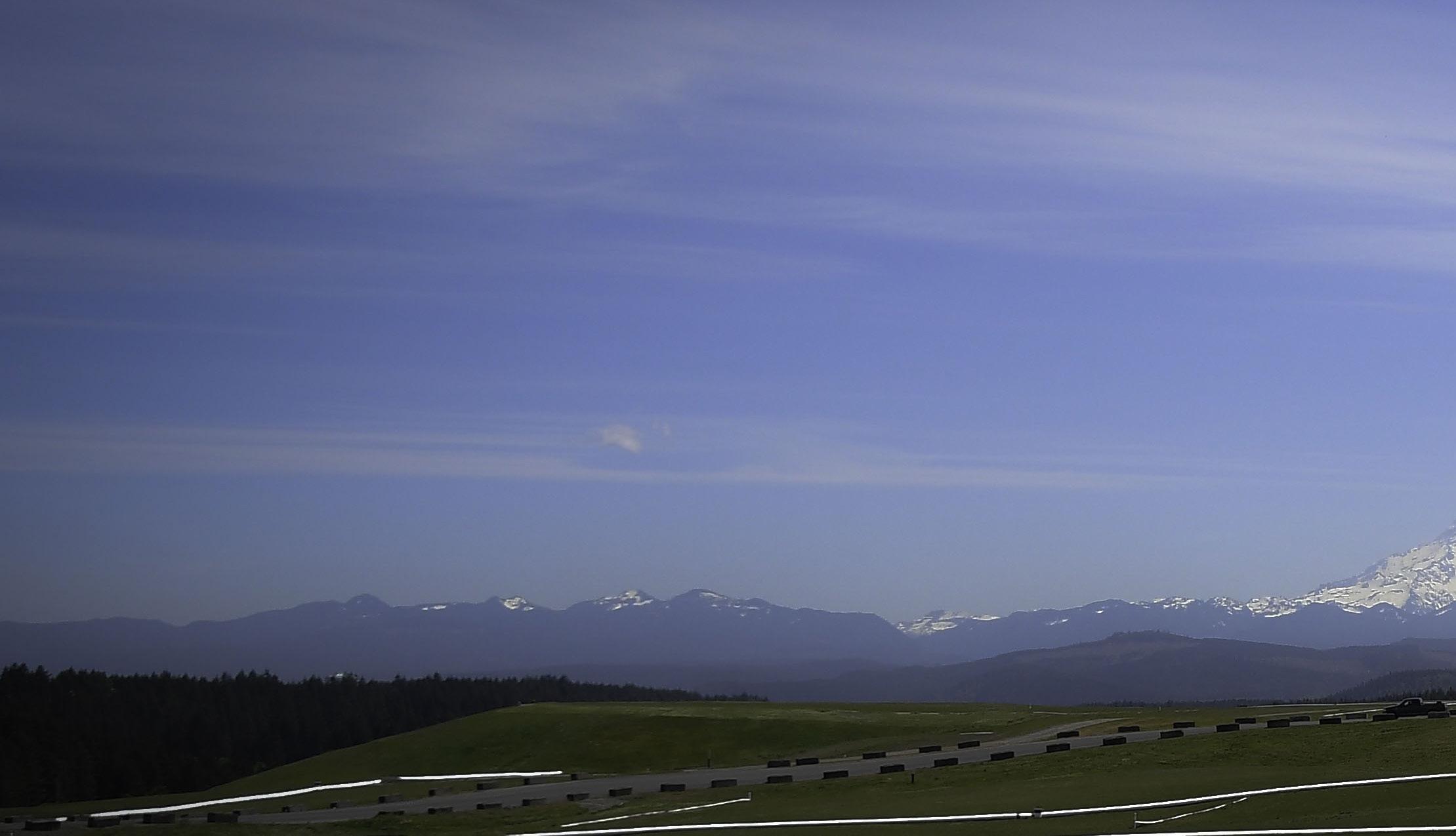
The Sustainability 2030 Plan focuses on reducing emissions created within the borders of Pierce County. However, the items and services we purchase that are created outside of Pierce County also result in GHG emissions. Here is a look at where those consumptionbased emissions come from for an average Pierce County household.
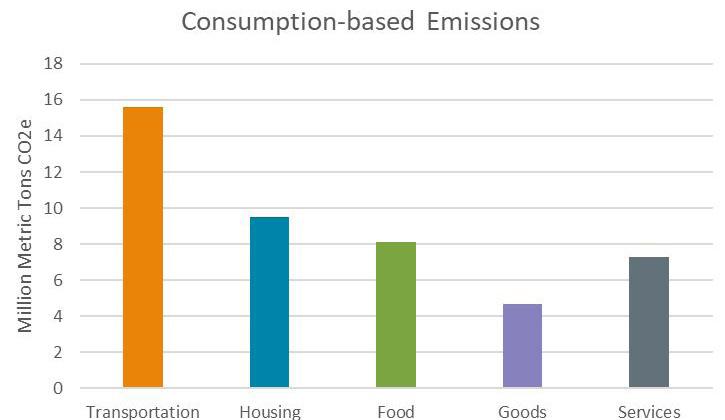
What are we hearing from the community? Many community members continue to express concerns about the amount of litter and pollution in their communities. Increased education for waste reduction and collaboration for materials sharing were also popular themes.
Quotes:
“Parents are interested in waste reduction and nature-based climate solutions.”
– Community Dialogue participant (Latinx Family Advocacy Program)
“I would love a robust community program for sharing, repairing, reuse of goods. It could have so many positive downstream impacts if done properly and everyone could benefit from this.”
– Online survey participant
“Better education from garbage/recycling about what can actually be recycled/goes into the landfill.”
– Franklin Pierce Youth First Coalition member
Pierce County’s Solid Waste Disposal Voucher Program collaborates with community partners to help residents keep their spaces clean and healthy. Vouchers cover one free residential load (less than one ton) and are currently offered in English, Spanish, Russian, and Ukrainian!

As of April 2024, all food waste is now accepted in yard waste carts across Pierce County to help reduce greenhouse gases at the landfill. Residential drop-off is also allowed as part of the Food/Yard waste program. Learn more on our curbside yard waste webpage.
We offer water bottle filling stations to up to 15 schools each year! All Pierce County school districts and private schools (outside of Tacoma) are welcome to apply. Priority is given to schools that can demonstrate they are actively working to reduce waste. Learn more about Recycling & Waste Reduction programs available to schools on our School Waste Reduction & Recycling webpage.
Nature plays a vital role in ecosystem and community resilience to climate change. Forests, soils, wetlands, and marine ecosystems (like kelp forests and salt marshes, absorb and store carbon) helping reduce greenhouse gas emissions. Natural areas also serve as buffers against storms, help absorb and filter floodwaters, and provide cooling through shade and release of moisture from plants, protecting communities and building resilience to climate impacts. In Pierce County, more than 65,000 acres of forest were lost between 2006 and 2019 due to human-caused changes such as tree removal, residential and industrial development, and forestry (according to Washington Department of Fish and Wildlife high resolution change detection data). Strategies such as tree planting, regenerative agriculture, shoreline restoration, and green stormwater infrastructure can enhance carbon sequestration while also improving air and water quality, reducing flooding, and supporting biodiversity. These efforts provide vital co-benefits, from cleaner environments to stronger community connections.
NCS Action 1 Blue Carbon: Partner with Washington Department of Natural Resources to map and analyze eelgrass presence in unincorporated Pierce County nearshore and develop regulations to protect eelgrass beds.
NCS Action 2 Salmon Recovery: Create a Pierce County Salmon Recovery Plan to accelerate salmon habitat restoration, protect endangered Southern Resident Orcas, and coordinate collaboration.
NCS Action 3 Prairie Conservation: Work with local Tribes and conservation organizations to identify remaining prairie lands and conservation priorities that promote biodiversity and endangered species protection.
NCS Action 4 Land Conservation: Develop a funding strategy and tracking metrics to advance the County’s goal of conserving at least 100,000 acres for carbon sequestration, biodiversity, flood protection, and other ecosystem services.
NCS Action 5 Land Practices: Support small forest landowners and farmers with best management practices through technical assistance programs in partnership with Pierce Conservation District and WSU extension.
NCS Action 6 Biochar: Conduct feasibility study for a biochar production and evaluate opportunities to integrate biochar into forest, agricultural, and stormwater projects for water quality, soil health, and carbon sequestration benefits.
NCS Action 7 Green Stormwater Infrastructure: Accelerate and expand the Green Stormwater Mini Grants program with Pierce Conservation District which funds raingardens, rain tanks, and de-paving projects.
NCS Action 8 Urban Forestry: Identify priority urban forestry sites and implement a tree planting project that serves as a model for developing an Urban Forestry Management Plan to reduce stormwater runoff and urban heat.
NCS Action 9 Community Science: Include students and community members as leaders to conduct environmental restoration and community science projects for ecosystem health.
NCS Action 10 Connection to Nature: Provide and support programming that reconnects community members of all ages to nature to improve mental health and help restore relationships to the land.
NCS Action 11 Nature-based Green Jobs: Work with partners to support to build a skilled workforce for green stormwater infrastructure, urban forestry, habitat restoration, and regenerative agriculture.
Community feedback continues to exhibit strong support of the protection and addition of trees throughout Pierce County. Community members have additionally expressed interest in having more community gardens, better access to green spaces and parks, and green infrastructure to help catch water runoff and keep neighborhoods cool.
“We need to find a way to connect our modern community with our native communities. We acknowledge them but need to work towards connecting with them and their ways of knowing. We are on their land, they know how to take care of the land.”
– Lakewood Youth Council member
Lead: PPW - LRP
Support: PPW - ORCA, PPW - SWM
Lead: PPW - ORCA Support: PPW - SWM
Lead: Tribes, PPW - ORCA Support: PPW - LRP, Parks
Lead: PPW - ORCA Support: PPW - LRP, PPW - SWM, Parks
Lead: PPW - ORCA Support: Parks
Lead: PPW - Solid waste Support: PPW - ORCA, PPW - SWM
Lead: PPW - SWM Support: PPW - ORCA
Lead: PPW - ORCA Support: PPW - LRP, PPW - SWM, Parks
Lead: PPW - ORCA Support: PPW - SWM, Parks
Lead: PPW - ORCA Support: Parks
Lead: PPW - ORCA Support: PPW - SWM, Parks
“Garden spaces can be used as more than just a garden space, could be education spaces, community and event spaces.”
– Front and Centered watch party participant
“Acknowledgement of natural spaces that are not parks – there are not going to be parks everywhere, there are going to be gaps –recognizing and encouraging those spaces that are smaller ways to connect. Thinking of green area around the library.”
– Franklin Pierce Youth First Coalition member
Pierce County’s Sewer division extracts nutrients from wastewater to create a fertilizer called SoundGro. ORCA and Sewer work together to promote the use of compost and SoundGro to return nutrients and organic matter to soils. To learn more about SoundGro, visit our SoundGRO webpage. To learn more about how you can compost at home, visit our Composting Resources webage.
In 2023 and 2024, Pierce County coordinated a steering committee of land conservation practitioners from across local agencies and partners to create a Land Conservation Plan. The purpose of the Plan is to lay out the history of land use change in Pierce County, conservation priorities, funding, and other program opportunities to conserve high priority lands. It also lays out next steps Pierce County will take to conserve land. The Land Conservation Plan was adopted by the Pierce County Council on June 24, 2025. To learn more, visit our Land Conservation webpage
Pierce Conservation District (PCD) offers Green Stormwater Mini Grants annually to individuals, businesses, and community groups in the Commencement Bay, Chambers Creek, and Lower Puyallup River Watersheds for projects that reduce polluted stormwater runoff entering our local waterbodies. Learn more about the mini grant program here.
The Surface Water Management Division of Planning and Public Works supports funding the expansion of the Tacoma Tree Coupon Program to residents in unincorporated Pierce County. The partnership between the County, City of Tacoma, and Tacoma Public Utilities gives residents access to discounted trees from local nurseries. Coupons are available October –March and are valid for $30 off up to three trees. Learn more about other ways to support Pierce County's tree canopy.

Education and outreach are essential in building understanding and support for the actions identified in this plan. To create understanding and encourage communitywide action, we must engage all Pierce County residents and work together with employers, businesses, and industry. We must center frontline community members in these efforts to equitably distribute the benefits of greenhouse gas (GHG) reduction. Partnering with and valuing organizations who serve frontline community members can lead to greater collaboration and collective participation to reduce GHG emissions.
Increase Youth Engagement in Climate Action
Increase Community Engagement in Climate Action
EO Action 1 Youth in Climate Action: Support and amplify youth voices in sustainability planning and decisionmaking processes to increase connections to green career pathways and community-driven climate solutions.
EO Action 2 Teacher Support: Support K-12 teachers in under-resourced schools to implement appropriate climate and sustainability curriculum to improve climate science literacy that is meaningful and culturally relevant.
EO Action 3 Climate Education: Partner with agencies to provide and expand local climate change educational workshops, activities, and engagement opportunities that are meaningful and culturally relevant.
EO Action 4 Climate Preparedness Communication: Work with partners to build community awareness about climate hazards, how to prepare for climate impacts, and resources for families to stay safe during extreme weather.
EO Action 5 Green Jobs Fair: Collaborate with partners and agencies to host green job fairs that focus on equitable access.
Lead: PPW - ORCA
Lead: PPW - ORCA
Lead: PPW - ORCA
Lead: DEM Support: PPW- ORCA, Human Services Grow our Green Economy
EO Action 6 Career Pathways: Build professional skills and connect students with higher education opportunities, career exposure, internships, and entry-level jobs in fields that support sustainability.
Lead: PPW - ORCA
Support: Human Resources (HR)
Lead: PPW - ORCA
Support: HR, Parks, PPWSWM, PPW - OCE, PPW - LRP, Human Services, Facilities, Finance, DEM
Broadly, Pierce County community members want more opportunities to make social connections and to learn about climate change, civic engagement processes, and home energy efficiency improvements.
Quotes:
“Share the most important info out on social media, keep it to quick messaging, fun skits, pairing videos, game-ify it like trivia…Have youth do the posting, but give them rules so it stays safe.”
– Lakewood Youth Council member
“Additional classes on climate change to get a deeper understanding"
-Online survey participant
The Pierce County Environmental Education team has been building a network of high school and college age youth that want to make a difference in their local communities by developing solutions to some of our most pressing environmental problems. Youth Engaged in Sustainable Solutions participants connect with each other through Annual Climate Summits, regular Climate Café events throughout Pierce County, volunteer opportunities, and more. Find out how to get involved in YESS here.
The Pierce County Environmental Education team partners with schools and districts across Pierce County to provide transformative sustainability education experiences for K–12 students. Through hands-on lessons, investigations in the field, and project-based learning, students explore local environmental issues and develop real-world solutions. These programs are designed to align with academic standards while empowering students to take informed action to better our schools and communities. Areas of focus include waste reduction campaigns, water quality monitoring, habitat restoration, and climate change education. Through this work, we help foster the next generation of environmental stewards.
Experts from Pierce County Planning and Public Works offer practical insights and valuable tips to community members through the Earth Matters series –free virtual and in-person classes on topics like gardening, composting, food waste prevention, energy conservation, electric vehicles, sustainable travel options, and much more. Whether you're new to sustainability or a seasoned enthusiast, these classes will empower you with the resources to contribute to a healthier, more vibrant Pierce County. Learn more and sign up for classes here.
Reducing communitywide greenhouse gas (GHG) emissions to create a healthy environment for all requires us to work in partnership with our community. We cannot and should not do this work alone. The following actions address the foundational capacity our community needs to start and lead their own GHG reduction projects that address specific community priorities. Internally, we must invest in our team’s organizational capacity to center equity and dismantle systemic barriers to community participation such as language barriers, time constraints, and location limitations.
GCC Action 1 Leadership Development: Support and expand climate leadership development for Pierce County residents including Climate Leaders Cohort, internships, and other programs.
GCC Action 2 Climate Communication: Develop a climate communications mini grant program to fund partner organizations who promote opportunities for community members to participate in climate action and policymaking.
GCC Action 3 Expand Collaboration: Facilitate professional networks of local government staff, elected leaders, facilities and fleet managers, business leaders, and community-based organizations to advance collective sustainability goals.
GCC Action 4 Strengthen Tribal Relationships: Maintain governmentto-government relations with Tribal nations to work in partnership in stewarding land, plants and animals and implementing treaty rights on County property.
GCC Action 5 Partner Workshops: Develop a series of workshops to support community partners in accessing funding and developing partnerships.
GCC Action 6 Business Coaching: Work with partners to support creating a Sustainability Coaching program for local businesses.
GCC Action 7 Green Economy Assessment: Conduct a Pierce County Green Economy assessment to identify high-growth green industries and attract new green jobs.
GCC Action 8 Climate Preparedness: Integrate climate adaptation and resilience to support frontline communities into the Pierce County Comprehensive Plan and adopt new resilient design guidelines.
Lead: PPW- ORCA
Lead: PPW- ORCA
Lead: PPW- ORCA
Lead: PPW- ORCA, Parks, PPW- SWM, PPW- LRP
Lead: PPW- ORCA
Lead: PPW- ORCA
Support: Economic Development
Lead: PPW- ORCA
Support: Economic Development
Lead: PPW-LRP
Community members want to see more support and capacity-building opportunities for communitybased organizations to get involved in climate solutions.
Quotes:
“Increase budgeting for low income and disabled organizations to help improve people’s homes to be more climate friendly.”
– Online survey participant
“Challenges that limit progress [community members forming 501c-3 org, applying for grants] include policies & regulations, lack of funding, lack of ongoing funding.”
– Community Dialogues participant (Trust for Public Land)
Since 2022, Pierce County staff have been facilitating quarterly meetings for staff across local cities, towns, tribes, and other public agencies to discuss sustainability priorities, learn together, and share best practices. In 2024, a group of elected leaders from several Pierce County jurisdictions also began meeting to advance collective action on climate change. Pierce County plans to continue facilitating and participating in inter-jurisdictional meetings that help us move collaborative actions forward.
In 2024, City of Tacoma and Pierce County partnered to offer climate leadership training facilitated by the Tacoma Tree Foundation. Participants learned about civic processes, sustainability issues, and how to get involved. Each participant created their own community action project with the support of Tacoma Tree Foundation. We plan to continue supporting the Climate Leadership Cohort program.

Climate change is already impacting Pierce County through increased flooding, wildfire smoke, extreme heat events, and shifts in precipitation patterns. These changes threaten public health, infrastructure, and natural resources. To ensure County services remain reliable and our communities are prepared for current and future climate risks, enhancing resilience is now an integral part of our approach to planning, operating, and maintaining County infrastructure.
As Pierce County works to support our community’s transition to a low-carbon, climate resilient future, we are similarly committed to reducing our own operational emissions by making clean energy and transportation choices, decarbonizing the County waste system, utilizing nature-based solutions for County lands and resources, and strengthening employee knowledge of equitable, sustainable practices. Our County Actions are informed by ongoing strategies, just like our Community Actions, and include both near-term and longer-term tasks that will help us meet our emissions reduction goal. We know most County emissions are generated by employee commutes, fleet vehicles and equipment, and heating and cooling County buildings. These internal activities represent an important opportunity for the County to lead by example, aligning operational goals with community emission reduction targets while embedding equity in all our practices and policies.

In 2015, wastewater treatment made up 7 3 % of
(and 55 % in 2019) Solid waste accounted for the remaining portion of
in 2015 and 2019)
Operational emissions increased by 2% between 2015 to 2019.
Between 2015 and 2019, the buildings sector has experienced the greatest increase in emissions (25% increase), followed by transportation at 3%. The largest emissions reductions occurred in the waste sector, where emissions have decreased 17% since 2015.
Consumption-based emissions also decreased (15% between 2015-2019). See Figure 2 and Figure 3
Figure 2. Emissions by Sector Over Time (mtCO2e)
Buildings are the second largest contributor (26% of the total in 2019). The combustion of natural gas is the chief source of emissions within this sector (19% of all operational emissions ).
3: Emissions by Sector Over Time (Percentage)
County buildings and fleet vehicles account for nearly two-thirds of Pierce County’s operational greenhouse gas (GHG) emissions. While significant progress has been made towards decarbonizing both building operations and transportation systems, continued and expanded efforts are critical to meeting internal emissions reduction target and enhancing resilience to climate impacts. Actions focus on reducing emissions through strategic investments in electrification, energy efficiency, and cleaner fuels.
CBF Action 1 County Building Electrification: Implement the building electrification strategy to meet the intent and goals of Pierce County's Electric First Policy.
CBF Action 2 Lighting Efficiency: Replace all existing building and street lighting with LED fixtures and install energy-efficient lighting controls.
CBF Action 3 Fleet Decarbonization: Implement the fleet decarbonization strategy and install appropriate electric vehicle charging equipment.
CBF Action 4 Ferry Decarbonization: Explore feasibility of shore power and renewable diesel for ferries.
CBF Action 5 Low-Carbon Fuel Credits: Evaluate benefits of participation in Washington’s Clean Fuel Standard program by producing low-carbon fuel credits (for example, through provision of electric vehicle charging stations).
Lead: Facilities
Lead: Facilities
Lead: Finance, PPW- M&O
Lead: PPW - M&O
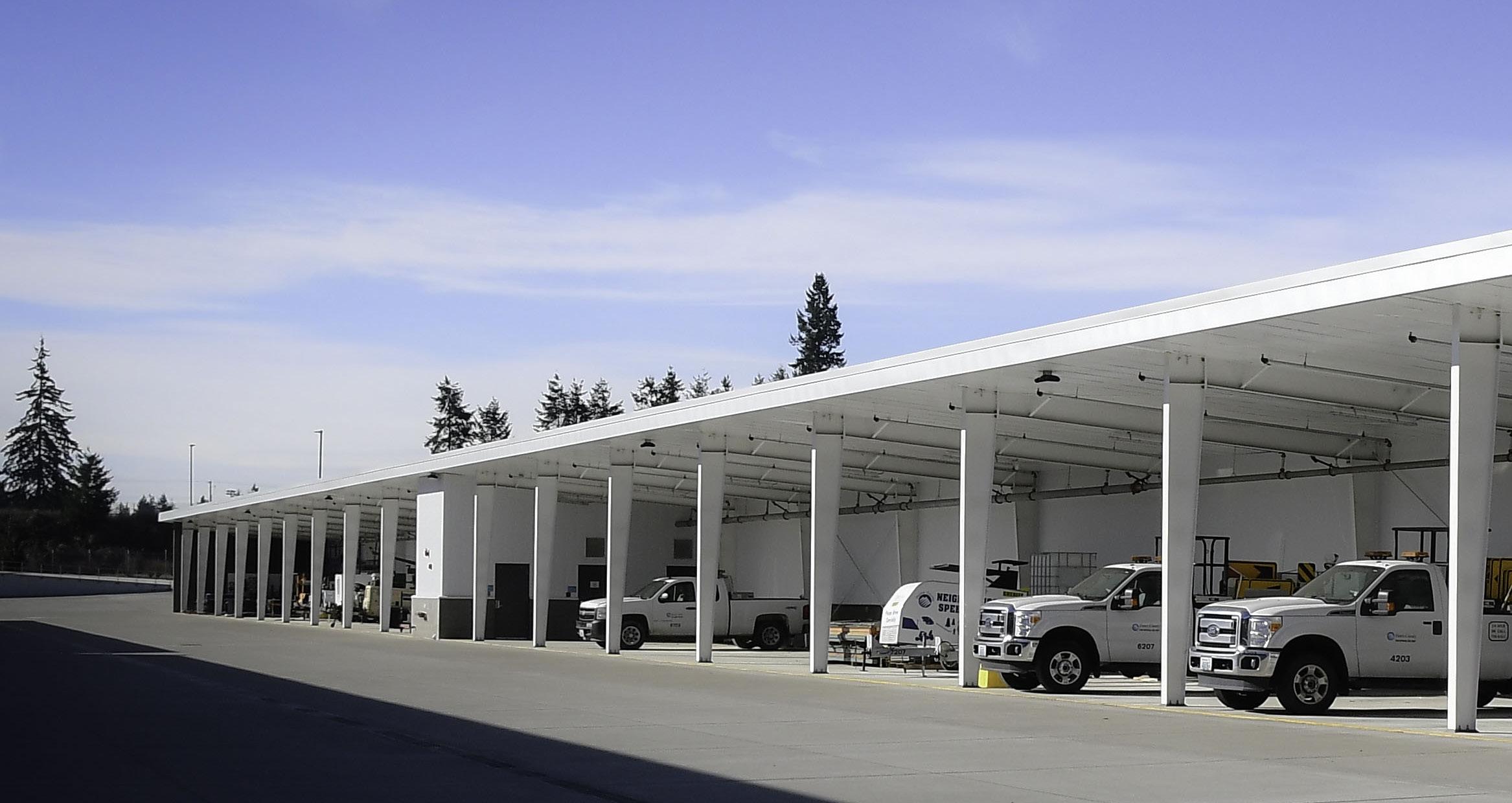
Lead: Finance Support: PPW - ORCA, PPWM&O
Since 2023, Pierce County’s Electric First Policy has helped move us toward the greenhouse gas emissions reduction goals of Sustainability 2030 by requiring all departments to prioritize efficient electric options over fossil fuel alternatives when making building infrastructure upgrades and vehicle and equipment purchases. Year over year more Pierce County fleet vehicles are hybrid or all-electric models. Choosing electric options saves money for the County and our residents and increases public health!
Pierce County’s Resource Conservation Program, housed within the Facilities Management Department, collaborates with other departments to ensure facilities meet County and State sustainability goals. This includes enhancing energy and water efficiency and reducing greenhouse gas emissions with a focus on human health, safety, and equity. Learn more about program progress and current projects here.
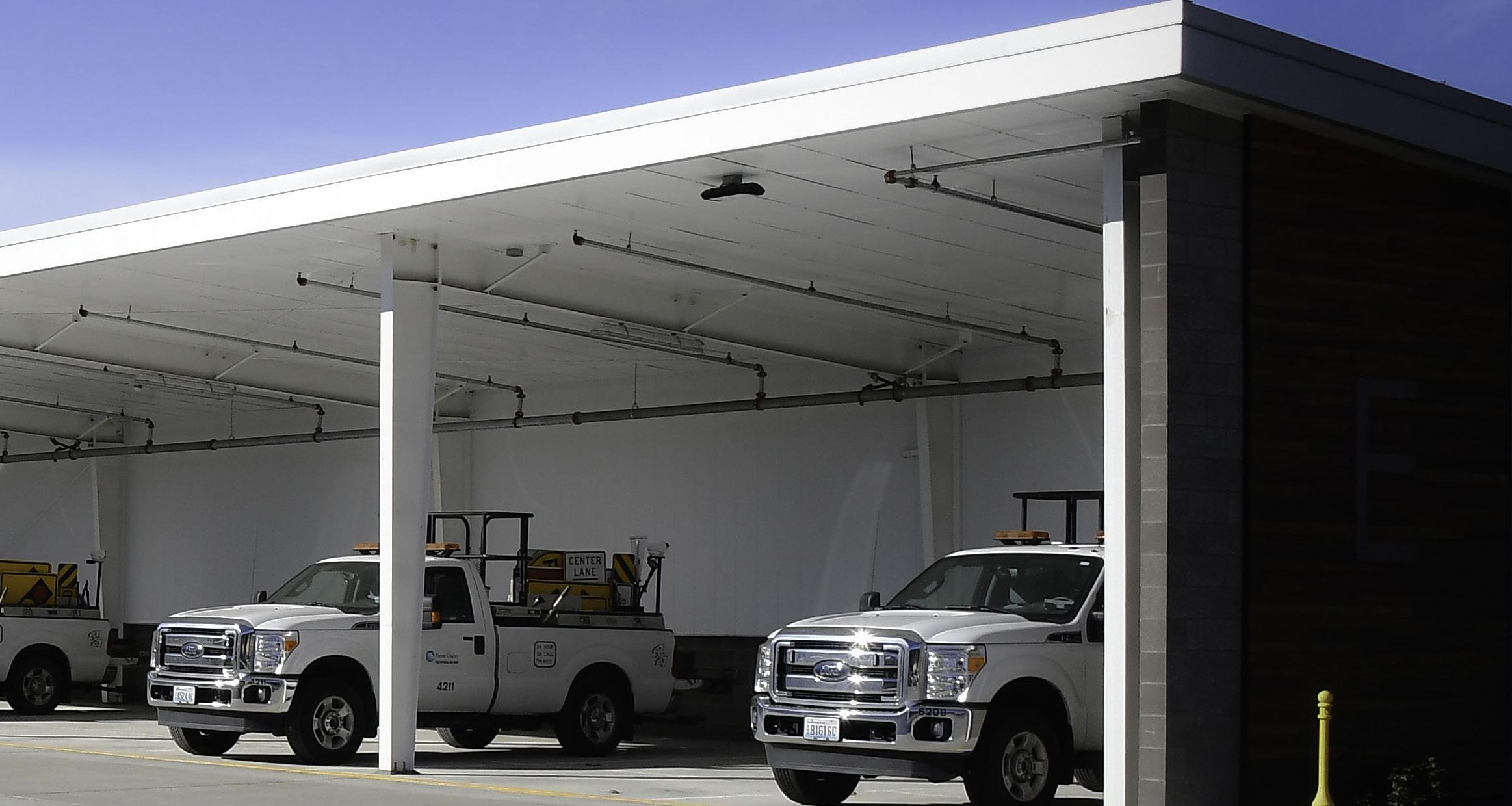
26% of County greenhouse gas (GHG) emissions come from employees commuting to work and traveling for business. The County can play an important role in helping employees reduce singleoccupancy vehicle commutes by encouraging carpooling, vanpooling, public transit use, biking, and teleworking when possible.
Strategies Actions
Reduce Vehicle Miles Traveled
Increase Active Transportation
CTR Action 1 Modern Workplace: Determine current staff use of alternative work schedules and telework agreements, set a County goal for reducing vehicle miles travelled from employee commutes, and promote a modern workplace.
CTR Action 2 Sustainable Commutes: Develop targeted campaigns to promote sustainable commute options for downtown Tacoma worksites where parking is limited.
Lead: PPW - LRP
Support: PPW - ORCA
Lead: PPW - LRP
CTR Action 3 Bicycle Infrastructure: Develop a plan for bicycle infrastructure at County owned facilities.
Lead: Facilities
Last year, Pierce County employee telework agreements reduced employee commuting by 6.6 million miles from January – October, avoiding 2,910 metric tons of CO2 emissions. That’s the equivalent of taking more than 650 gas-powered cars off the road for one year!

3% of County operational greenhouse gas (GHG) emissions come from solid waste generated at County buildings. The emissions generated from the operation of the County’s wastewater treatment plant account for 6% of total County emissions alone. While we will continue to work with employees to reduce County waste, we also have an opportunity to improve waste systems managed by the County to reduce communitywide GHG emissions as well. 4% of communitywide emissions result from landfill operations and wastewater treatment.
CWS Action 1 Internal Recycling: Unify recycling systems at County buildings and educate employees on best practices.
CWS Action 2 Infrastructure Updates: Expand the Purdy Compost Facility and make GHG emission reducing improvements to other existing County-owned solid waste facilities
CWS Action 3 Biodigester: Pilot a biodigester project as an alternative food waste management system.
CWS Action 4 Sustainable Wastewater: Maximize the beneficial use of biosolids and biogas produced during the wastewater treatment processes at the Chambers Creek Regional Wastewater Treatment Plant through the Unified Sewer Planning process to contribute to GHG reduction efforts.
Lead: Facilities Support: PPW - Solid Waste
Lead: PPW - Solid Waste
Lead: PPW - Solid Waste
Lead: PPW - Sewer
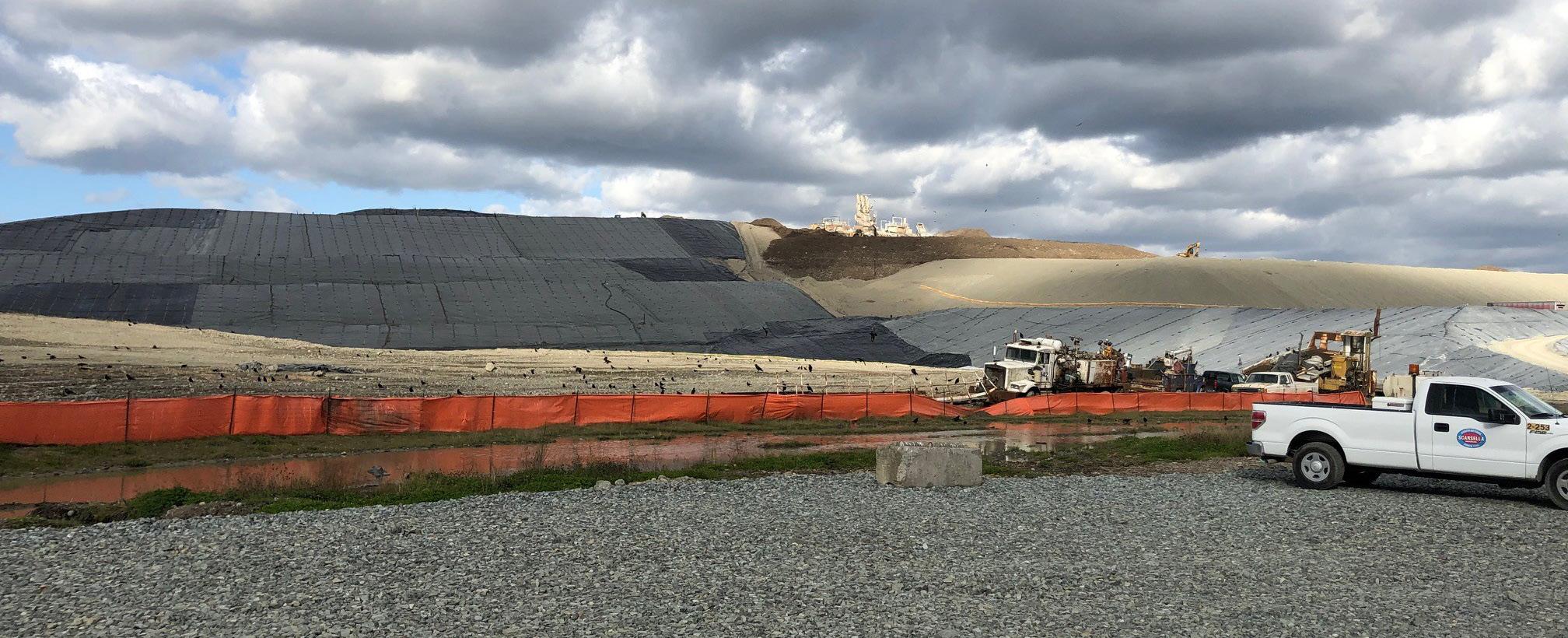
Nature-based climate solutions are important in Pierce County because these strategies provide benefits far beyond greenhouse gas (GHG) emissions reduction. “Greening” our County infrastructure means choosing options that protect our buildings, roadways, and lands from climate impacts like flooding and extreme heat while also improving public health and ensuring resilience to changing natural conditions. Green infrastructure solutions are also proven to be cost-effective in the long run.
CLR Action 1 County Plant Nursery: Develop a native plant and tree nursery to supply County forestry and habitat restoration projects.
CLR Action 2 County Landscaping: Work across departments to steward sustainable urban landscaping on all County properties for carbon sequestration and climate resilience benefits.
CLR Action 3 Sustainable Water Reuse: Maximize the beneficial use of reclaimed water produced by the Chambers Creek Regional Wastewater treatment plant to irrigate the Chamber Creek Properties including the park, golf course, play field and landscape and reclaimed water produced by the Cascadia treatment plant to irrigate landscape and right-of-way within the Tehaleh planned community.
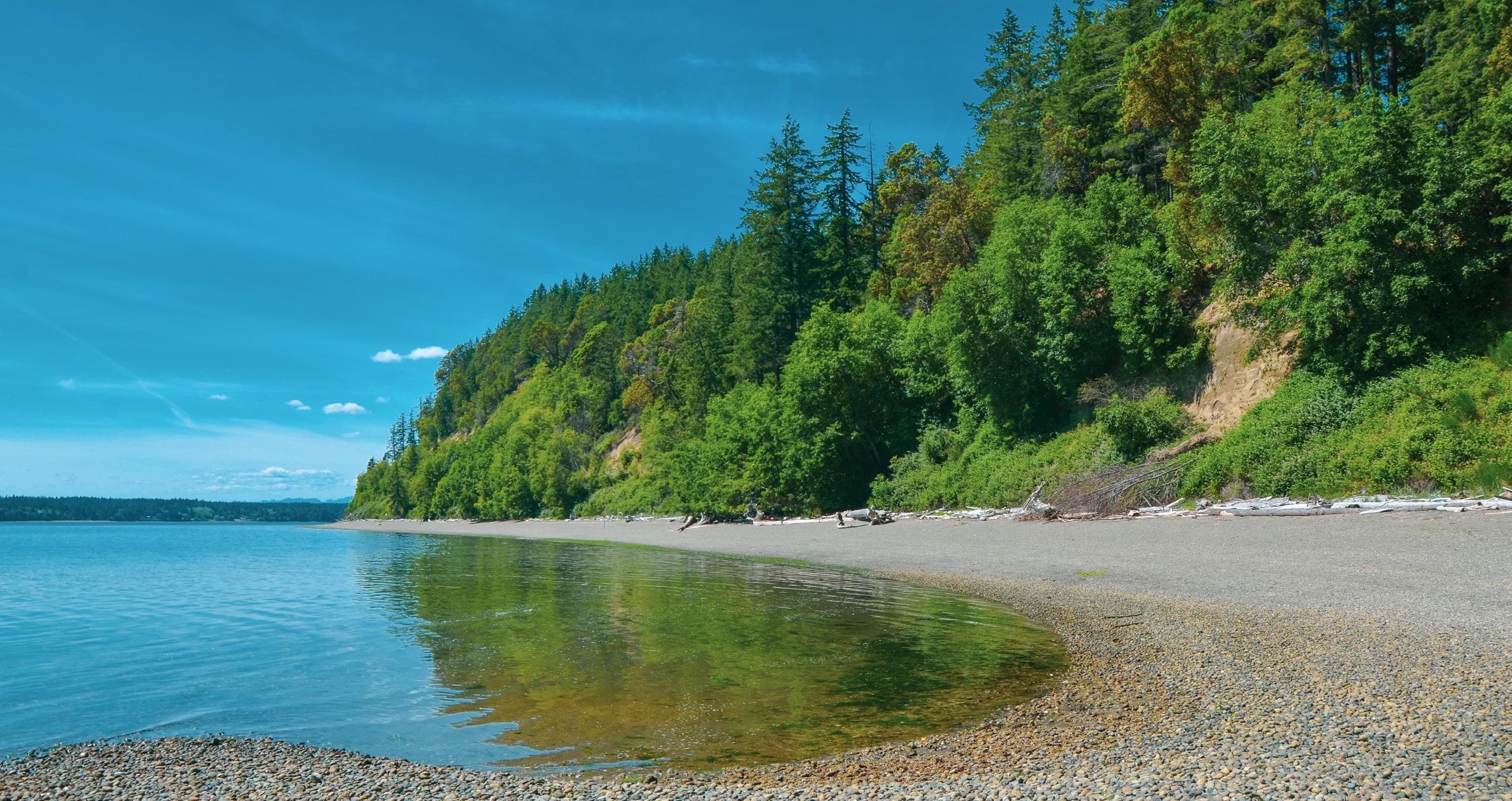
To continue equitably engaging community members in sustainable solutions and building relationships with community-based organizations, Pierce County needs build internal understanding of equity and sustainability practices. The actions in this focus area aim to increase County capacity to equitably reduce greenhouse gas (GHG) emissions.
Strategies Actions
Increase Employee Engagement in Climate Action
Increase Community Engagement in Climate Action
EEEP Action 1 Employee Education: Develop employee training and continuous learning opportunities on sustainability and greenhouse gas (GHG) reduction practices.
EEEP Action 2 Energy Code Training: Ensure Development Services reviewers have sufficient training and technical assistance to interpret and understand complex energy code updates.
Lead: PPW - ORCA Support: HR, Communications
Lead: PPW - Development Services Support: PPW - ORCA
EEEP Action 3 Employee Capacity for Equitable Engagement: Develop internal effort to increase community voices in County processes and decrease disproportionate harms caused to lowincome communities and communities of color.
Lead: PPW - ORCA Support: HR

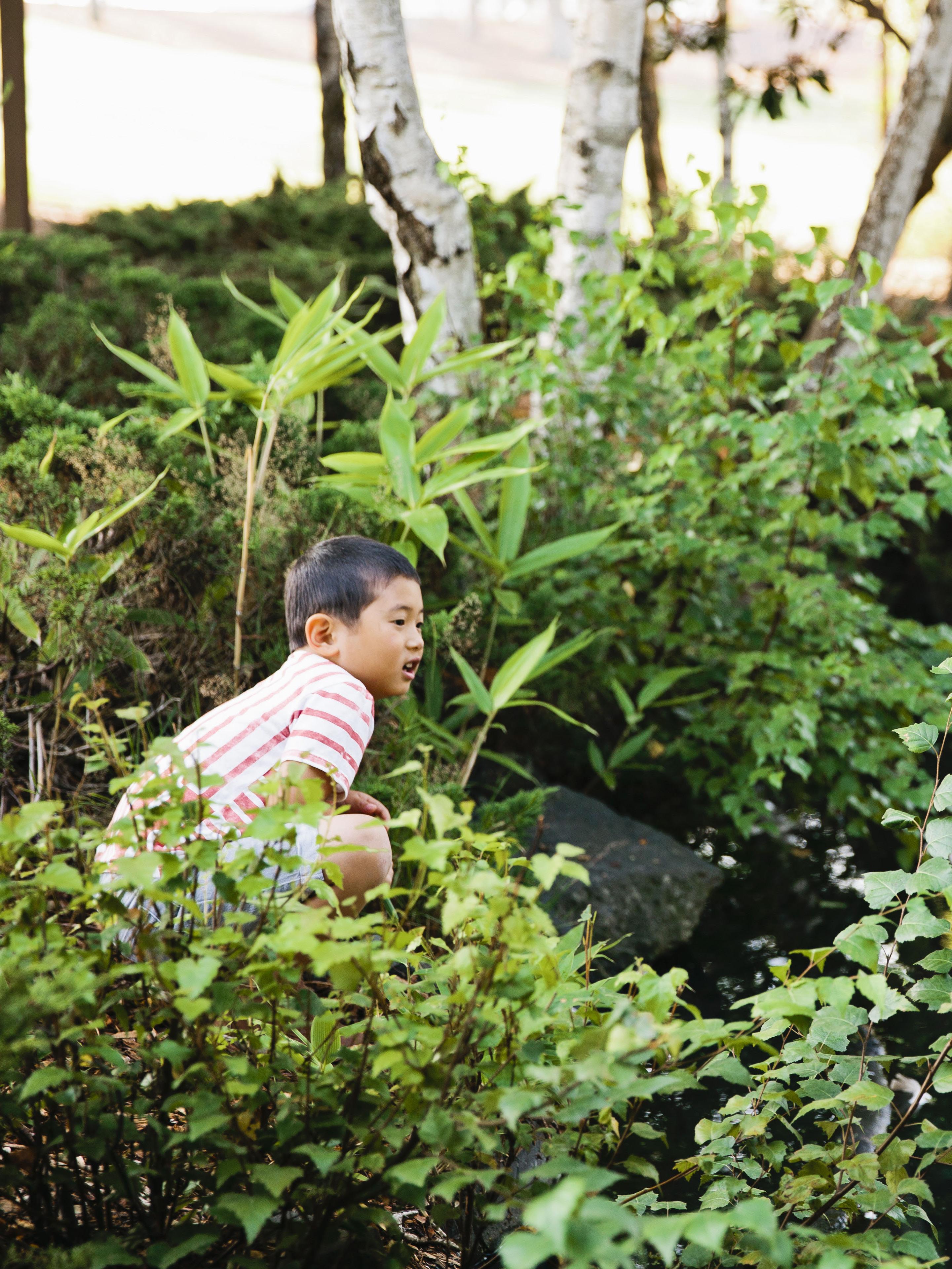
Defiance

Creating and sustaining systemic change to reduce greenhouse gas (GHG) emissions and build climate resilience requires us to reflect on what’s working well and where adjustments should be made within this evolving field of research and practice. Our 2025 update allowed us to add, remove, refine and adjust our actions. Changes to the Plan were made based on community feedback, our ongoing assessment of climate vulnerability and equity impacts, and direction from County leadership and staff experts.
:
Ensure Pierce County Executive and Council engagement, oversight, and support of GHG reduction efforts.
Support Pierce County's Comprehensive Plan to End Homelessness. 1 2 3 4 5
Prioritize actions to maximize co-benefits, especially those that will most affect frontline communities and those identified as community priorities.
Secure funding resources for Plan implementation and coordination.
Continue to meaningfully engage frontline community members, build relationships with partners, and integrate community priorities into Plan implementation.
• Accessible Communities Advisory Commission
• Bethel Family Services
• The Chayah Movement
• City of Tacoma
• Climate Pierce County
• Communities for a Healthy Bay
• Downtown on the Go
• EarthGen
• Economic Development Board
• Floodplains for the Future
• ForeverGreen Trails Association
• Franklin Pierce Youth First Coalition
• Key Peninsula Partnership
• KGI Watershed Council
• King County
• Lakewood Youth Council
• Safe Streets
• Sound Transit
• Tacoma Tree Foundation
• Tacoma-Pierce County Health Department
• Tacoma Public Utilities
• Tahoma Indian Center
• Trust for Public Lands
• University of Washington - Tacoma
• Western Washington Clean Cities
• White River Partnership
• Walk and Roll Pierce County Coalition
• Washington High School Global Challenges Class
• WorkForce Central
• WSU Pierce County Extension
• Latinx Family Advocacy Program
• LRI
• Master Builder’s Association
• The Mustard Seed Project
• Northwest Seaport Alliance
• Peninsula Light
• Pierce Conservation District
• Pierce County Master Gardeners
• Pierce County Libraries
• Pierce Transit
• Puget Sound Clean Air Agency
• Puget Sound Energy
• Puget Sound Regional Council
• Puyallup Tribe of Indians
• Red Barn Youth Center



• City of Tacoma 2030 Climate Action Plan
• Clear Creek Strategy Plan
• Department of Ecology 2023-2025 Strategic Plan
• Northwest Ports Clean Air Strategy
• Parks, Recreation and Open Space Plan
• Pierce County Community Plans
• Pierce County Comprehensive Plan
• Pierce County Solid and Hazardous Waste Management Plan
• Pierce Transit Development Plan
• Puget Sound Clean Air Agency Strategic Plan
• Puget Sound Regional Council Transportation Plan
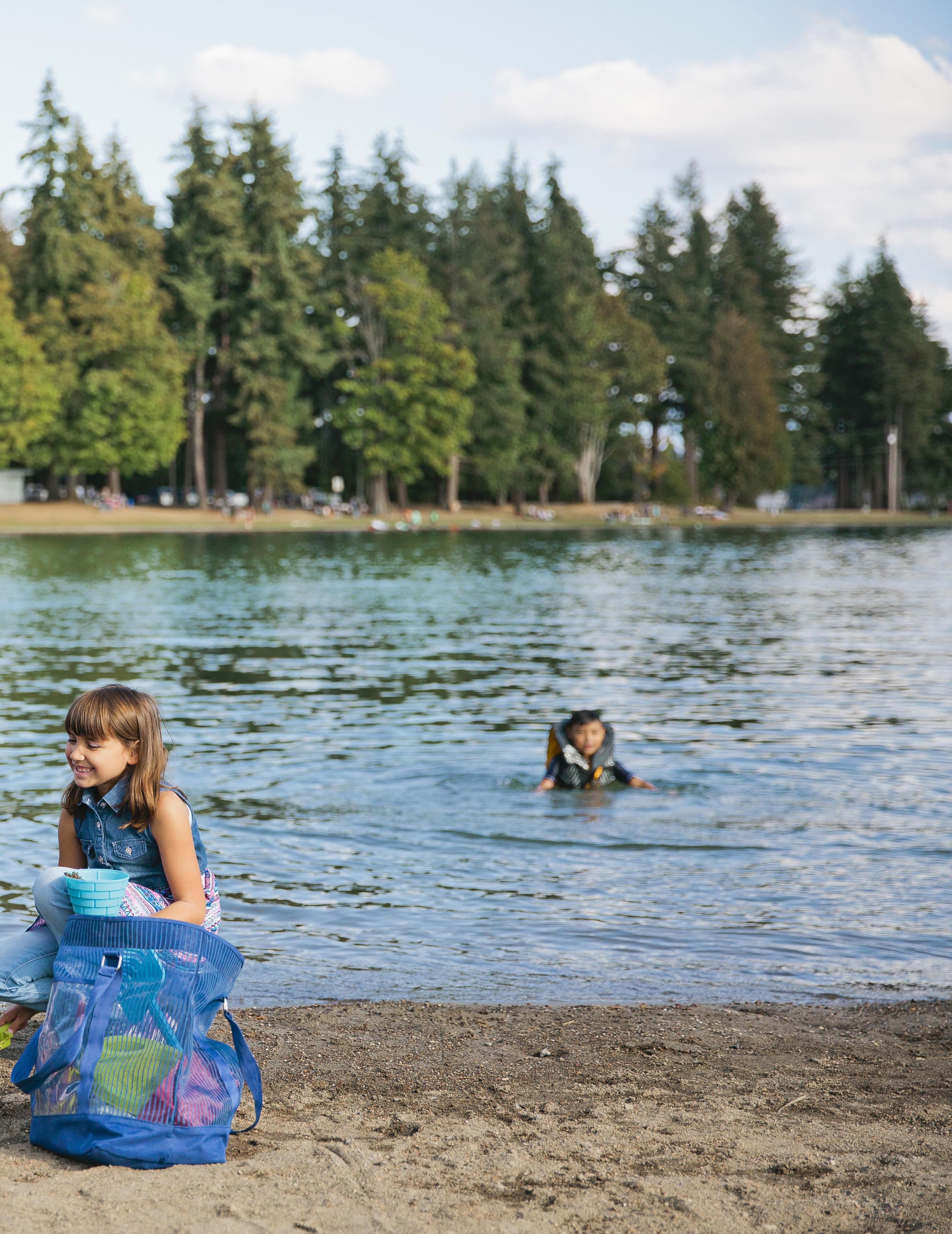
• Salmon Habitat Protection and Restoration Strategy for Puyallup and Chambers Watersheds
• Washington Department of Commerce 2021 State Energy Strategy
• Land Conservation Plan
EBE-1 Electrify New Buildings: Adopt codes and support developers as they move towards 100% electrification in new developments.
EBE-2 Retrofit Existing Buildings: Maximize energy rebates coming into Pierce County and create new, local expedited permitting for retrofitting existing homes and buildings, particularly affordable and multifamily housing, for healthy low carbon living spaces.
EBE-3 Transit-oriented Growth: Focus new growth in communities where high-capacity transit is available or planned.
In progress; incorporated into 2025 Update
In progress; incorporated into 2025 Update
Complete
EBE-4 Community Solar: Prioritize opportunities for community solar projects that serve as demonstration projects (Purdy Landfill, Chambers Bay) and/or reduce energy burden in priority communities.
EBE-5 Access to Renewable Energy: Eliminate barriers to the installation of renewable energy projects and achieve SolSmart silver designation by 2025.
EBE-6 Weatherization Assistance: Seek new funding and improve contracting processes to expand the capacity of Pierce County's weatherization program to serve more low-income residents.
EBE-7 C-PACER: Expand, market and administer the Commercial Property Assessment Clean Energy + Resiliency (C -PACER) program.
EBE-8 Reduce Embodied Carbon: Reduce the carbon intensity of new buildings by encouraging net zero emission construction practices, such as cross laminated timber (CLT), low GHG construction materials, and designing for deconstruction.
Will be complete by end of 2025; continued work in 2025 Update
Complete; continued work in 2025 Update
Complete
Complete & ongoing
Not started; incorporated into 2025 Update
The adoption of the 2021 Washington State Energy Code, which encourages electrification in new construction, completes the first part of this action. Ongoing support to developers is described in new plan action EB Action 1: Development Decarb
The ORCA team partnered with neighboring counties and large cities to launch and promote online resources to help residents to navigate local and federal electrification rebates & incentives. Ongoing support for residents and business owners in their effor ts to decarbonize existing buildings is described in new EB Action 4: E&B Resources. Targeted support to help larger buildings is described in new EB Action 2: Regional Collaboration.
Relevant policy changes were made to the Housing and Transportation Elements as part of the 2024 periodic update of the Pierce County Comprehensive Plan , and include HO-2.4: Plan for housing density and affordable housing in high-opportunity neighborhoods near existing or future transit routes with high frequency service; TR-16.12: Support opportunities to serve or increase transit service to high -employment commercial and industrial centers within the Urban Growth Area ; and TR-17-2: Work with transit agencies to address first and last mile barriers to transit use and connections to jobs and housing including locating active transportation facilities to sidewalks that best serve transit routes . Proposed code updates to align with these changes, expected June 2025, will complete implementation of this action.
Pierce County Planning & Public Works Solid Waste Division is constructing a 1-megawatt solar array on the site of the closed Purdy Landfill with the help of grant funding from Washington's Climate Commitment Act. Revenue generated from the array will benefit energy -burdened Key Peninsula community members. Ongoing support for renewable and distributed clean energy projects is described in new EB Action 5: Community Solar.
The ORCA team and Pierce County Communications developed a Solar Energy resource webpage, and LongRange Planning & Development Services Teams completed additional tasks to help Pierce County achieve SolSmart Silver designation In April 2025. More support for residents interested in solar energy is described in new EB Action 6: Residential Solar Pilot.
The ORCA team partnered with Human Services to bring nearly $4 million in additional funding for weatherization assistance qualifying residents. Ongoing work to support weatherization efforts is described in new EB Action 4: E&B Resources.
Established in 2022, Pierce County’s Commercial Property Assessed Clean Energy and Resiliency (C -PACER) program allows owners and developers of commercial, industrial, agricultural, and multi -family buildings to utilize an innovative financing mechanism to pay for qualifying efficiency and resiliency projects. ORCA will continue to administer and improve the C -PACER program.
This action is now part of new EB Action 1: Development Decarb
EBE-9 Land Use: Review land use plans to identify specific strategies for greenhouse gas emissions reductions
Complete
EBE-10 Energy Audits: Work with homebuilders to increase efficiency in new homes and create a local home energy audit program to retrofit older homes.
T-1 Clean Transit: Support Pierce Transit’s efforts to implement a zero-emission fleet, expand bus rapid transit offerings, and promote on-demand first/last mile transportation services.
T-2 Active Transportation Plan: Evaluate Pierce County's active transportation network in the urban unincorporated area and create an active transportation plan.
Revised; incorporated into 2025 Update
Revised; incorporated into 2025 Update
Complete
T-3 Port Decarbonization: Support efforts to advance electrification at the Port of Tacoma and Northwest Seaport Alliance (NWSA), including the Shore Power Program, the South Harbor Electrification Roadmap (SHERM) project, and development of a regional clean truck collaborative.
T-4 ORCA Usage: By 2025, increase ORCA card usage 10% from 2022 ridership.
In progress; incorporated into 2025 Update
Complete
T-5 Transit Education: Reach out to students about youth ORCA card, low carbon transportation options, and how to utilize them.
T-6 Transportation Planning: Implement land use and transportation strategies, including multi -modal transportation investments, that reduce vehicle miles traveled and advance equitable outcomes for underserved and historically disadvantaged communities.
T-7 Parking: Update development regulations to reduce minimum parking requirements and require electric vehicle charging infrastructure.
In progress; incorporated into 2025 Update
Revised; incorporated into 2025 Update
Will be complete by Q1 2026
Relevant goals and sub policies were added to the Land Use Element as part of the 2024 periodic update of the Pierce County Comprehensive Plan, including LU-10: Implement the Compact Urban designation within the central UGA to encourage the development of transit -oriented compact urban communities ; and LU-77: Plan for housing density and affordable housing in high -opportunity neighborhoods near existing or future transit routes with high frequency service . Proposed code updates to align with these changes, expected June 2025, will complete implementation of this action.
This action has been revised to focus on helping homeowners and renters understand how the energy efficiency of new and existing homes affects utility costs and is now part of new EB Action 3: Residential Heat Pump Pilot.
This action has been split into two actions to better track progress; please see new T Actions 1: Transit Infrastructure and 8: Zero Emission Buses.
This action is complete with the adoption of the 2024 Comprehensive Plan in February 2025. The new Transportation Element of the Comprehensive Plan, Chapter 12, includes a detailed analysis of Pierce County’s active transportation network, gaps, priority projects, and maps to build out an equitable active transportation network. New T Action 4: Increase Walking and Biking includes ongoing implementation of the Active Transportation Plan.
This action has been carried forward into the 2025 Update with minor text changes; see new T Action 9: Port Decarbonization.
As community-wide ORCA ridership in Pierce County increased more than 49% from 2022 -2024, and with nearly 6000 trips taken so far this year (through April 2025), ridership is well on track to exceed the 10% increase over 2022 trips. See new T Actions 2: Youth Transportation and 3: Community Transportation for ongoing sustainable transportation support work.
This action has been expanded to include sustainable transportation options beyond transit; please see new T Action 2: Youth Transportation.
This action has been refined to focus on transportation planning efforts around specific best practices and initiatives; please see new T Action 5: Complete Streets.
This action is in progress and will likely be complete by early 2026. Relevant policy changes were made to the Transportation Element as part of the 2024 periodic update of the Pierce County Comprehensive Plan , including TR-24.3: Incorporate Transportation Demand Management (TDM) strategies into County regulatory programs such as zoning, site design, development standards, and parking management. Code updates to align with these changes are in development, including regulations for commercial and multi-family EV charging.
T-8 Telework: Encourage Pierce County's commute trip reduction (CTR) affected employers to reduce traffic flow in and out of King County through the promotion of telework whenever practical.
Complete & Ongoing
T-9 Airport Electrification: Support an electric aviation program that includes charging stations and looks at the viability of an electric plane. Omitted
T-10 Clean Aviation: Prepare to respond to FAA changes regarding low lead and low carbon fuel.
T-11 Accessible Walking and Biking: Significantly increase amount of bicycle and pedestrian infrastructure with a focus on creating accessibility in the urban area and connections to cities and trails.
T-12 Public EV Charging: Develop a countywide public electric vehicle infrastructure plan that prioritizes underserved communities and seek funding and partnerships to install public charging equipment.
T-13 Multi-modal Safety: Evaluate County roads for safety and compatibility with walking, biking, and transit.
Revised; incorporated into 2025 Update
Revised; incorporated into 2025 Update
Complete
T-14 Commute Trip Reduction: By 2025, decrease the drive alone rate among Commute Trip Reduction (CTR) affected employers compared to 2022 numbers. Omitted
WR-1 C&D Waste: Work with interested parties to increase salvage, reuse, and recycling of construction and demolition debris (major contributor to GHG emissions in the solid waste management system) (SHWMP, MW1).
WR-2 Food Waste Reduction: Determine options and recommendations, including GHG analysis, for residential and commercial food waste subsidies, fees, and disposal (SHWMP, O1). Revised; incorporated into
WR-3 Green Tech Recycling: Support Federal and State efforts to create recycling and producer responsibility programs for batteries, solar panels, and other emerging clean technology (relates to SHWMP, A2).
WR-4 Single-use Waste: Support legislation at the state -level that promotes packaging with the lowest life cycle GHG emissions (SHWMP, WR1)
Complete
Complete
Pierce County's Commute Trip Reduction (CTR) team is now located in Planning & Public Works Long -Range Planning division, and continues to work with and support large employers, including the County, in implementing telework and other modern workplace options. See new CTR Action 1: Modern Workplace, to learn more about internal efforts to reduce employee vehicle miles travelled.
This action has been omitted from the 2025 Plan update as it is unlikely Pierce County will make significant progress on this action in the next two years. This action will be revisited in the future .
This action has been omitted from the 2025 Plan update as it is unlikely Pierce County will make significant progress on this action in the next two years. This action will be revisited in the future .
This action has been refined to specifically implement projects in the Active Transportation Plan; see new T Action 4: Increase Biking and Walking.
Significant progress was made on this action in 2024 with the publication of Pierce County’s Public EV Charging Framework. This action has been refined to focus on EV infrastructure where it is most needed; see new T Action 7: EV Charging.
This action is complete with the adoption and implementation of Pierce County’s Vision Zero Plan. Safety for all road users will be continuously monitored as strategies are implemented to achieve zero on -road fatalities.
This action is omitted from the 2025 Plan update, as the WSDOT data regarding drive alone rates for CTR affected employers is no longer available in a comparable format with which to see reductions.
This action has been revised to reflect new opportunities to reduce construction & demolition waste in Pierce County; see new WR Action 1: C&D Waste.
In response to WA Dept of Ecology new regulations for organics recycling, this action has been refined to focus on reducing food waste in schools to help schools meet State requirements ; see new WR Action 3: Food Waste.
This action is complete with the passage of Washington’s Battery Stewardship program in 2023 and the Solar Panel Stewardship and Takeback Program extension in 2025 .
This action is complete with the passage of Washington's Extended Producer Responsibility (EPR) program in May 2025. Further work on this topic is describe in new WR Action 2: Single-use Waste.
NCS-1 Land Conservation Plan: Create and adopt a county land conservation plan that identifies potential lands and strategies for carbon sequestration and ecosystem services.
NCS-2 Urban Forestry: Create an urban forestry plan for unincorporated Pierce County that sets a tree canopy and planting goal with strategies for tree protection that will reduce urban heat.
NCS-3 Stormwater: Develop and implement a policy that incentivizes absorbent landscapes, water retention and green infrastructure (ponds, raingardens, bioswales), and works to limit impervious surfaces where appropriate.
NCS-4 Blue Carbon: Partner with local Tribes, the Washington Department of Natural Resources and others to map eelgrass and kelp and identify innovative ways to sequester carbon in estuaries and the nearshore environment.
Will be complete by end of 2025
In progress; incorporated into 2025 Update
Revised; incorporated into 2025 Update
In progress; incorporated into 2025 Update
NCS-5 Unify Land Conservation Programs: Unify county land conservation incentives (Conservation Futures, Transfer of Development Rights, and the Open Space [tax] Program) to meet guidance provided by the land conservation plan . Omitted
NCS-6 Rural Incentives: Implement recommendations of the land conservation plan to conserve rural and resource lands and strengthen rural economies.
NCS-7 Forest Management: Steward County properties for carbon sequestration, climate change resilience and forest health and work with the Pierce Conservation District and WSU Pierce Extension to support small forest landowners with best management practices.
NCS-8 Biochar: Conduct feasibility study for a biochar production and evaluate opportunities to integrate biochar into forest, agricultural, and stormwater projects for water quality, soil health and carbon sequestration benefits.
NCS-9 Compost Use: Promote the use of compost and SoundGRO in Pierce County.
EO-1 Sustainability Collaborative: Expand and administer the Pierce County Sustainability Collaborative to share best practices with cities, tribes, and major employers.
Revised; incorporated into 2025 Update
Revised; incorporated into 2025 Update
In progress; incorporated into 2025 Update
Complete & Ongoing
Complete & Ongoing
This action will be complete when the Land Conservation Plan is adopted by the Pierce County Council (expected summer 2025). Ongoing land conservation work is described in new NCS Action 4: Land Conservation.
This action has been refined to include more specific goals; please see new NCS Action 8: Urban Forestry. This action has been revised to amplify opportunities for residents to incorporate nature -based climate solutions into landscapes; see new NCS Action 7: Green Stormwater Infrastructure.
This action has been refined to include tasks related to the Puget Sound National Estuary Program Habitat Strategic Initiative Lead (HSIL) grant award for 2025 -2027 and is described in new NCS Action 1: Blue Carbon. Future action updates will use data from this project to inform ongoing Tribal involvement as well as the 2029 Shoreline Master Program update
New NCS Action 4: Land Conservation outlines next steps for implementing the Land Conservation Plan and focuses on funding mechanisms and tracking progress. This action will be revisited when Conservation Futures is due for a code update in 2028.
This action has been revised and refined across a variety of new actions; please see new NCS Actions 3: Prairie Conservation, 4: Land Conservation, and 5: Land Practices.
This action has been split into two actions to more easily track progress: new NCS Action 5: Land Practices and new CLR Action 2: County Landscaping.
This action is in progress and is carried forward in the 2025 update as new NCS Action 6: Biochar. ORCA and Pierce County's Sewers Division will continue to promote the use of SoundGRO and other compost sources to return nutrients and organic matter to soils.
This action is complete, and ongoing work will include collaboration with expanded professional networks ; please see new GCC Action 3: Expand Collaboration.
EO-2 Climate Education: Provide local climate change educational workshops, activities and engagement opportunities that are meaningful and culturally relevant.
EO-3 Community Engagement: Implement a community engagement strategy moving towards community -led strategies that center frontline community members.
EO-4 Newsletter: Create a sustainability -focused newsletter and distribute to Pierce County residents as a virtual Earth Matters.
Complete; continued work in 2025 Update
Complete & Ongoing
EO-5 Youth in Climate Action: Support and amplify youth voices in sustainability planning and decision -making processes
EO-6 Teacher Support: Support K-12 teachers in implementing appropriate climate and sustainability curriculum to improve climate science literacy that is meaningful and culturally relevant.
EO-7 Green Workforce Development: Partner with local education providers to support equitable workforce training programs to prepare for a low-carbon, renewable-energy economy.
GCC-1 Leadership Development: Support the Climate Leaders Cohort with partners to open sustainability leadership trainings to Pierce County residents.
GCC-2 Connections to Nature: Provide and support programming that reconnects community members of all ages to nature to improve mental health and help restore relationships to the land.
GCC-3 Climate Impacts Planning: Concurrent to updating the Hazard Mitigation Plan, integrate climate adaptation into the applicable natural hazard mitigation strategies of Pierce County communities.
GCC-4 Strengthen Tribal Relationships: Maintain government -togovernment relations with Tribal nations to work in partnership as co-managers of the land, plants and animals.
Complete & Ongoing
Complete; continued work in 2025 Update
Complete & Ongoing; continued work in 2025 Update
Revised & expanded; incorporated into 2025 Update
Complete & Ongoing; continued work in 2025 Update
In progress; incorporated into 2025 Update
Will be complete by end of 2025
In progress; incorporated into 2025 update
Over the past two years, ORCA has provided many Climate Education opportunities to community members. This is ongoing work we will continue to implement and strengthen. This action has been revised to include partnering with external agencies; please see new EO Action 3: Climate Education .
ORCA continues to expand and deepen our implementation of the Equitable Community Engagement Framework, developed during the 2023 Update. See Appendix 3 of the 2025 Update for more details of this ongoing work.
In 2024, ORCA launched a public-facing monthly virtual newsletter called Earth Matters. The newsletter provides timely content and sustainability updates for Pierce County employees and thousands of newsletter subscribers every month. Future issues will highlight the work of partners and include more information about how residents can increase their resilience to climate impacts.
For more information about completed and ongoing youth programming, visit Youth Engaged in Sustainable Solutions. This action is ongoing and has been expanded to include specific areas of youth engagement, including green jobs; please see new EO Action 1: Youth in Climate Action.
This action is ongoing and has been refined to support teachers in under -resourced schools; see new EO Action 2: Teacher Support .
This broad action has been recognized as an ongoing, cross -cutting strategy. See EB Action 10: Buildings Workforce, T Action 10: Transportation Workforce, NCS Action 11: Nature-based Green Jobs, EO Action 5: Green Jobs Fair, EO Action 6: Career Pathways, and GCC Action 7: Green Economy Assessment .
Last fall 14 Pierce County residents took part in a three -day training and completed a capstone project as part of the Tacoma-Pierce County Climate Leadership Cohort. Ongoing efforts will include other opportunities for residents; please see new GCC Action 1: Leadership Development.
This action is in progress but has been moved to the Nature -based Climate Solutions section; NCS Action 10: Connections to Nature.
This action will be complete by the end of 2025. New work to specifically support frontline communities is described in new GCC Action 8: Climate Preparedness.
This action is in progress but has been revised to reflect the County's intent to recognize Tribes as equal partners in stewardship of mutual natural resources; see GCC Action 4: Strengthen Tribal Partnerships.
CBF-1 Building Electrification: Create a building electrification strategy to meet the intent and goals of Pierce County's Electric First Policy.
CBF-2 County Office Space: When reviewing County space needs (owned or leased), prioritize building energy performance, proximity to public transportation and walking and biking accessibility.
CBF-3 Fund Upgrades: Create a sustained funding mechanism to support building and fleet electrification upgrades at County facilities.
CBF-4 Lighting Efficiency: Complete the change out of building lighting and streetlights to LED's and more energy efficient lighting controls.
CBF-5 Fleet Electrification: Maximize fleet electrification and minimize fuel usage across County fleets.
CBF-6 EV Charging: Develop an electric vehicle charging infrastructure strategy and install appropriate electric vehicle charging equipment based on the needs of the fleet.
CBF-7 Ferry Efficiency: Repower boats with EPA regulated diesel engines.
CTR-1 Parking: Revise County parking policies to maximize vanpool, carpool, and transit usage by employees.
CTR-2 Bicycle Infrastructure: Develop a plan for bicycle infrastructure at County owned facilities.
CTR-3 Teleworking: Develop Countywide best practices for setting departmental telework policies.
Will be complete by end of 2025
Complete
Revised; incorporated into 2025 Update
In progress; incorporated into 2025 Update
Revised; incorporated into 2025 Update
Revised; incorporated into 2025 Update
Revised; incorporated into 2025 Update
Revised; incorporated into 2025 Update
In progress; incorporated into 2025 Update
Complete
This action will be complete by the end of 2025, and new action CBF Action 1: County Building Electrification reflects ongoing implementation work.
All County property reviews now consider access to transit, pedestrian access, neighborhood walkability, proximity to bicycle infrastructure, and provision of on -site bicycle amenities.
This action is in progress; the County continues to file for IRS Direct Pay rebates for qualified infrastructure upgrades, like electric vehicle chargers. New CBF Action 5: Low-carbon Fuel Credits describes another potential funding mechanism the County could use to fund further fleet electrification.
This action is in progress; new CBF Action 2: Lighting Efficiency continues this building decarbonization work.
This action has been combined with CBF-6; please see new CBF Action 3: Fleet Decarbonization.
This action has been combined with CBF-5 and reflects ongoing refinement and progress towards a comprehensive fleet decarbonization strategy; please see new CBF Action 3: Fleet Decarbonization.
This action has been refined to explore specific opportunities; please see new CBF Action 4: Ferry Decarbonization.
This action has been revised to support Pierce County commuters in locations where parking is limited; please see new CTR Action 2: Sustainable Commutes.
The action is in progress; please see new CTR Action 3: Bicycle Infrastructure.
This action is complete. Ongoing work to reduce employee vehicle miles traveled is described in new CTR Action 1: Modern Workplace.
CWS-1 Internal Recycling: Expand and enhance internal recycling support and waste reduction efforts, including the addition of internal waste audits.
CWS-2 Sustainable Landfill: Maximize the amount of GHG captured at the LRI landfill (SHWMP, O3).
CWS-3 Waste Collection Transportation: Develop a plan by 2025 for lowest GHG collection, disposal, and transport of Municipal Solid Waste (MSW) in collaboration with contract partners (SHWMP, C1).
CWS-4 Sustainable Wastewater: Maximize the beneficial use of biosolids and biogas produced during the wastewater treatment processes at the Chambers Creek Regional Wastewater Treatment Plant through the Unified Sewer Planning process to contribute to GHG reduction efforts.
EEP-1 Employee Education: Develop employee training and continuous learning opportunities on sustainability and GHG reduction practices.
EEP-2 Employee Capacity for Equitable Engagement: Develop internal effort to increase community voice in County processes and decrease disproportionate harms caused to low -income communities and communities of color.
In progress; incorporated into 2025 Update
Omitted
Omitted
In progress; incorporated into 2025 Update
In progress; incorporated into 2025 Update
In progress; incorporated into 2025 Update
This action is in progress, and ongoing work related to internal recycling efforts will be led by the Facilities Management Department in the new biennium; please see new CWS Action 1: Internal Recycling.
This action is omitted from the 2025 Plan update; the County has requested GHG capture at the LRI landfill but does not have direct control.
This action is omitted from the 2025 Plan update but will be revisited later.
This action is in progress and carried forward in the 2025 Update. Please see new CWS Action 4: Sustainable Wastewater.
This action is in progress; please see new EEEP Action 1: Employee Education.
This action is in progress; please see EEEP Action 3: Employee Capacity for Equitable Engagement .
While implementing Sustainability 2030 Plan actions throughout 2024 and 2025, Office of Resilience and Climate Action (ORCA) staff continued meeting with community -based organizations and agency partners on a wide range of topics to move forward Plan actio ns, attended community events, and held workshops. This appendix showcases a summary of community engagement efforts for the 2025 Update to the Sustainability 2030 Plan.
During the first Plan update process in 2023, ORCA facilitated dialogues with various organizations, agencies, and other Plan partners to elicit Plan feedback. For the 2025 update, our team followed up with those same groups in addition to talking with new ones. Pierce County partnered with the City of Tacoma to host Community and Agency dialogues when there was overlap with the City of Tacoma’s Climate Action Plan Update outreach.
Who we spoke with:
• Bethel Family Services
• Climate Pierce County
• Downtown on the Go
• Forever Green Trails
• Franklin Pierce Youth First Coalition
• Key Peninsula Partnership
• Pierce Conservation District
• Pierce County Accessible Communities Advisory Committee
• Pierce County Library Teen Services
• Puget Sound Educational Service District, Latinx Family Advocacy Program
• Puyallup Tribe of Indians
• Rebuilding Together South Sound
• Safe Streets
• Tacoma Tree Foundation
• Tahoma Indian Center
• The Chayah Movement
• The Mustard Seed Project
• Trust for Public Land
• Walk and Roll Pierce County Coalition
• White River Partnership
• Workforce Central
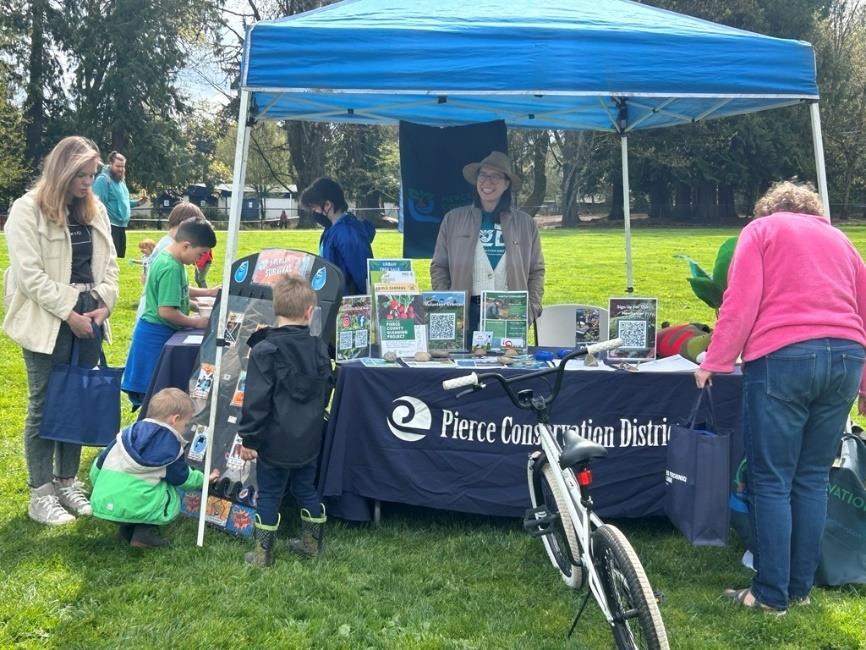
The Pierce Conservation District tabling at Pierce County’s Earth Day Celebration
What we asked:
Who do you serve and how?
Confirming priorities
Concerns and challenges
Community successes an assets
Climate impact stories What Plan sections are most important?
Community partcipation
Room for collaboration Who else should we be talking to?
Desired level of involvement
During the conversations with community partners and agencies, we asked what was going well in the communities these groups served. Most of what we heard was about having an engaged community as well as having increased community capacity and partnership o pportunities with other groups. Recognizing what’s going well in our community helps us better understand compatible community engagement strategies. See below some supporting quotes from these conversations.
"[We are] Actually functioning like a coalition and working collaboratively, not competitively. Helping each other out, lending each other funding ."
“Engaged community. Very caring and committed. Many volunteers that make things happen. People show up at community events .”
"Youth mental health first aid classes and carving at the center ."
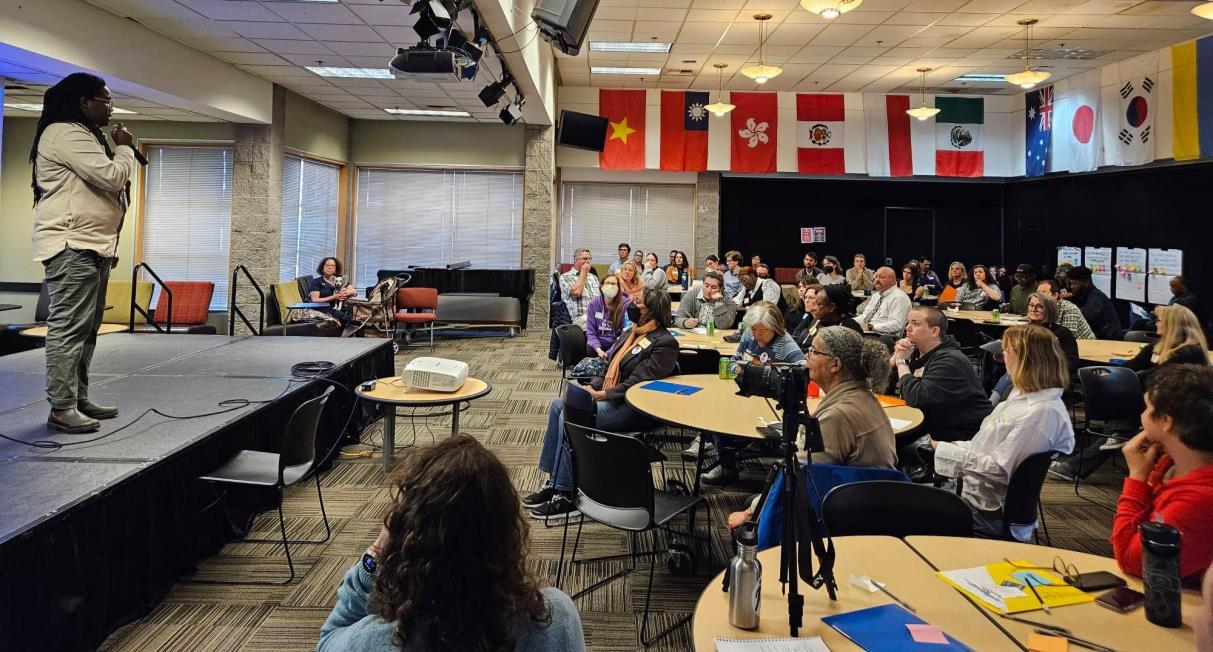
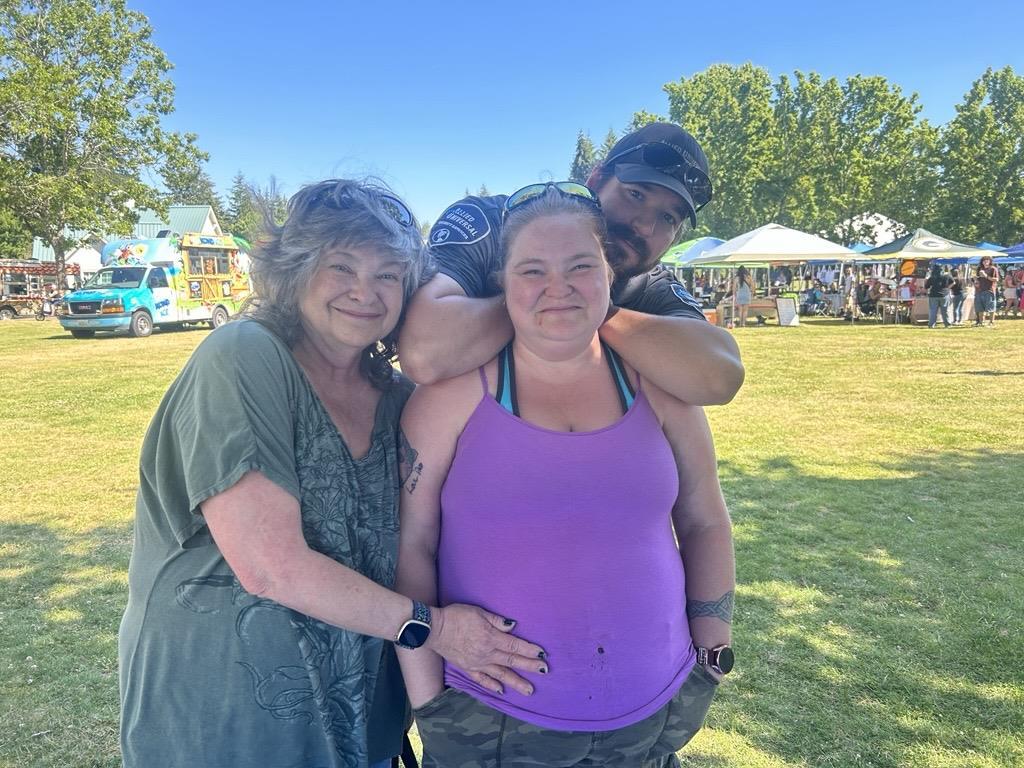

The table below outlines the main themes we heard during our conversations as well as supporting quotes and
Theme Supporting Quotes
Organizational capacity and funding
Financial and home concerns
• “Challenges that limit progress [community members forming 501c -3 org, applying for grants] include policies & regulations, lack of funding, lack of ongoing funding."
• "Awareness and access to rebates from utilities."
• "Families are struggling to pay bills, electricity, and water."
Education and outreach
• "Increasingly we suffer by not bringing in health as a co -benefit. Can help increase understanding with more community engagement."
• "Community priorities are still relevant – especially the education and outreach section."
Transportation access and active transportation infrastructure
Serving unhoused community members
Resilience for climate impacts
Urban forestry and green spaces
• "Safety for walking, development has increased. High schoolers are concerned about driving, younger feel unsafe walking – no sidewalks and no safe way to cross street."
• "Navigating how to help unhoused people."
• "Homelessness and housing are big concerns. Gig Harbor and KP are working on this. Looks different in a rural area. Doing a point in time count is very challenging."
• "People come into the center to get filter fans. Not an emergency shelter, but people come during office hours when it’s too hot or too cold."
• "Sports getting cancelled. Homecoming game got moved into Sumner. Lower-income families are much more impacted."
• "Students are in huge concrete jungle, lack access to green spaces. School is their only opportunity to mitigate urban heat, be near greenery. Increased rates of asthma (road related pollution). "
Managing waste
• "Food waste. Info on how to store food. Wondering: food banks to have access to food waste reduction resources."
and Plan actions that were influenced by the feedback.
• "Limitation [of transportation program] is time availability of volunteers."
• "[Youth] have financial concerns about what happens after they graduate. Things feel bleak around future planning."
Action(s) Impacted
GCC Action 2: Climate Communication
GCC Action 5: Partner Workshops
EBE Action 4: Energy & Buildings Resources
EBE Action 10: Buildings Workforce
T Action 10: Transportation Workforce
NCS Action 11: Nature-based Green Jobs
• "Wanting to do more FAMILY engagement, not just for middle schoolers. Would be a good place to have conversations, have a resource table."
EO Action 3: Climate Education
EEEP Action 3: Employee Capacity for Equitable Engagement
• "Not hearing EV access as a community priority. Hearing more about transit service and sidewalks and traffic safety needs."
• “Important to have good quality gear, like large battery banks that can be used for medical equipment (people who are homeless in Tacoma have had issues with their CPAP machines), crank operated flashlights and radios, better masking for bad air quality.”
• “Parents working in the field are most impacted. In the Summer, have to give them cooling bandanas, gloves –workplace doesn’t give proper PPE."
T Action 3: Community Transportation
T Action 6: Mobility Hub
GCC Action 8: Climate Preparedness
EEEP Action 3: Employee Capacity for Equitable Engagement
EBE Action 9: Resilience Centers
GCC Action 8: Climate Preparedness
• "Opportunities for traffic calming adding vegetation to medians – updating street design standards with vegetation requirements."
• "Managing waste and fostering community connection and wellbeing."
NCS Action 7: Green Stormwater Infrastructure
WR Action 4: Multi-family Recycling
back what we heard :
Feedback was analyzed into the major themes listed above. Groups who participated in the Community and Agency Dialogues were invited to participate in a virtual Open House Workshop to share what we heard from partners and provide further feedback on drafted Plan actions developed based on previous conversations
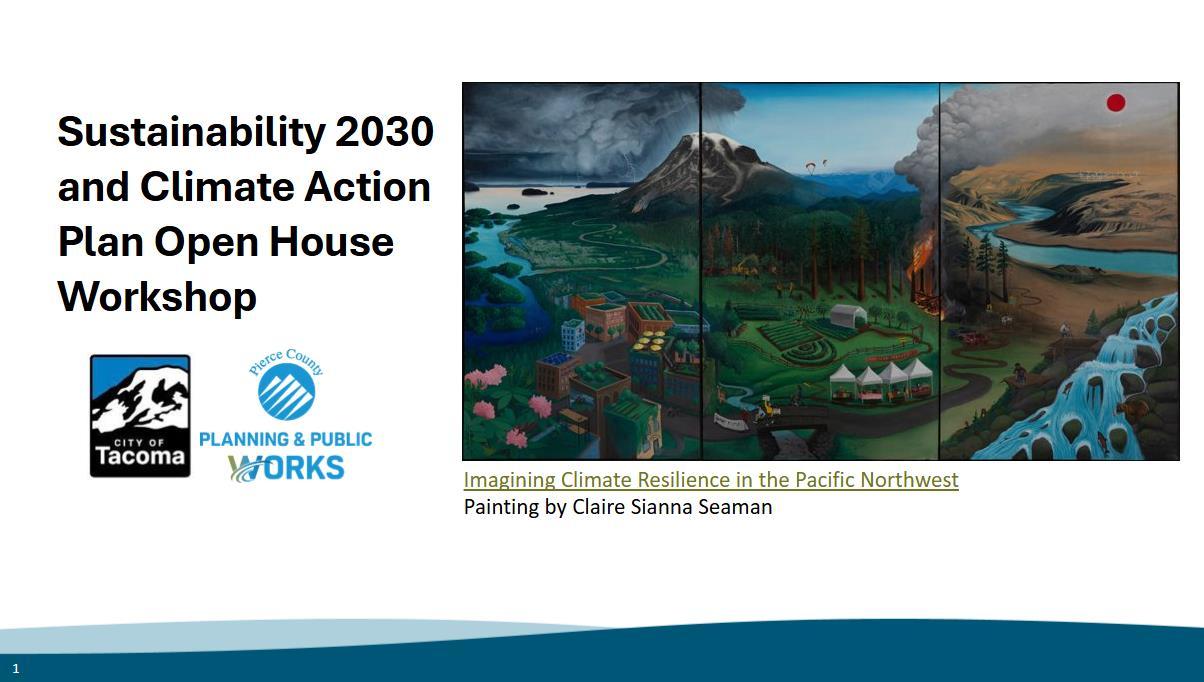
Agency Dialogues
In addition to meeting with the above community serving organizations and agencies, we had several actionspecific conversations with agencies. These dialogues were more focused on updating existing actions in the Plan. The table below organizes themes we heard as well as the Plan actions that were impacted based on agency feedback.
Tacoma-Pierce Chamber of Commerce Assistance for small businesses, convening business leaders
GCC Action 3: Expand Collaboration
GCC Action 6: Business Coaching Economic Development Board
Connecting education to career pathways, assessing green industry growth
Puget Sound Regional Council
Western Washington Clean Cities
Puget Sound Energy
Tacoma Power
Pierce County Master Builders Association
Regional Transportation Plan (RTP) is being updated for 2026 – opportunity to engage and provide feedback.
Can provide letters of consistency with RTP to include with funding requests.
Can support clean transportation transition, especially for repowering ferries, shore power
Rebate and assistance programs for electrifying buildings and transportation, opportunities for community solar
Existing weatherization and rebate programs, serving rental units
Focus on incentives to reduce fees and permitting time, align with housing goals
Northwest Seaport Alliance Port Decarbonization efforts, collaboration on heavy duty fleet and building emission reductions
Pierce Transit Grant opportunities for bus electrification, constraints of funding for transit service
Pierce County Library Facilities
Have seen impacts of wildfires & extreme heat on buildings & clients; interested in getting connected with PC DEM about how libraries can be included in emergency planning. Will want help engaging with community members on future sustainability actions (fo rmal plan coming 2026).
Fleet decarb planning, EV chargers for public also of interest.
EB Action 10: Buildings Workforce
T Action 10: Transportation Workforce
NCS Action 11: Nature-based Green Jobs
EO Action 5: Green Jobs Fair
EO Action 6: Career Pathways
GCC Action 7: Green Economy Assessment
T Action 7: EV Charging
CBF Action 4: Ferry Decarbonization
EB Action 4: E&B Resources
EB Action 5: Community Solar
T Action 7: EV Charging
EB Action 4: E&B Resources
EB Action 1: Development Decarb
EB Action 7: Reward Resilience
T Action 9: Port Decarbonization
T Action 1: Transit Infrastructure
T Action 8: Zero Emission Buses
EB Action 9: Resilience Centers
T Action 7: EV Charging
GCC Action 3: Expand Collaboration
During February and March, the Office of Resilience and Climate Action disseminated an online survey that walked participants through background information on the Sustainability 2030 Plan, sources of countywide greenhouse gas emissions, and climate change impacts in Pierce County before asking a series of rank choice and open -ended questions for each focus ar ea of the Plan. The survey received 89 responses and was
What Climate Solution Will Have the Greatest Impact in Our Community? top themes:
1. Transit access and reliability
2. Trees and other nature -based climate solutions
3. Land conservation
Top 3 Climate Crisis Concerns:
1. Extreme heat, smoke, and wildfire
2. Extreme storm events
3. Melting glaciers and snowmelt
Energy and Buildings top ranked actions:
1. Invest in and make it easy to install renewable energy projects
2. Incentives for home energy efficiency improvements
3. Design neighborhoods for density and walkability
4. Other top write -in response theme(s): plant trees, limit growth
Transportation top ranked actions:
1. Increase public transportation services
2. Increase sidewalks and bike lanes
3. Expand and connect regional trail network
4. Other top write -in response theme(s): road improvements, commute trip reduction
Waste Reduction top ranked actions:
1. Capture more methane (a very powerful greenhouse gas) at the landfill and wastewater treatment plant
2. Support community sharing, repairing, and reuse of goods
3. Promote building deconstruction and salvage material reuse
4. Other top write -in response theme (s): reduce single -use plastics, improve recycling
shared on the Sustainability 2030 Plan webpage, included in the Earth Matters ENewsletter which has a reach of 3,000 subscribers, used during in -person and virtual presentations about the 2025 Plan Update, and posted on social media platforms. Top responses for each section of the survey are detailed below.
Nature-based Climate Solutions top ranked actions:
1. Conserve rural farmlands and working forests
2. Plant and protect more urban trees and green space
3. Restore critical habitats like eelgrass beds and salmon bearing streams
4. Other top write -in response theme (s): protect old growth trees
Education & Outreach top ranked actions:
1. Support green job training programs (ex: renewable energy, home efficiency, electric vehicles)
2. Support teachers in implementing climate literacy curriculum
3. Provide free educational events and classes
4. Other top write -in response theme(s): community tree planting
Growing Community Capacity top ranked actions:
1. Provide opportunities to connect with nature
2. Build government-to-government relationships with Tribes
3. Support community organizations in seeking grant funding
Who Should We Be Talking to/Connecting with? top themes:
1. Companies and small businesses
2. Non-profits
3. Frontline communities
How Do You Want to Contribute to Climate Action? top themes:
1. Civic engagement
2. Volunteer/donate
3. Conserve energy at home
How Can Pierce County Make It Easier to Get Involved? top themes:
1. Offer more classes/workshops
2. Social media
3. E-newsletters
Pierce County partnered with the City of Tacoma and the Tacoma Pierce County Health Department to work with UWT nursing undergraduate students enrolled in a Climate and Health class to gather feedback from community members on community assets, concerns, and climate stories. The students designed their own research questions and presented their findings as a group poster at the end of the quarter. Students interviewed 49 community members and collected 619 dot board responses on campus over a three-week period.
The table below outlines community recommendations based on engagement feedback as well as UWT student recommendations in alignment with Sustainability 2030 Plan actions.
Community and Student Recommendations:
Community Recommendations
Provide community events
Student Recommendations*
Education & Outreach actions 2, 3, 5
Growing Community Capacity action 2
Walkable neighborhoods Transportation actions 11, 13
Improve safety
Provide homelessness resources
Create more green space
Manage extreme heat
Improve air quality
County Buildings and Fleet action 2
Education & Outreach action 3
Education & Outreach action 3
Education & Equitable Practices action 2
Nature-based Climate Solutions actions 2, 3, 5
Energy & Built Environment action 2
Nature-based Climate Solutions actions 1, 2, 3
*Sustainability 2030 Plan actions listed in this table reflect actions in the 2023 update of the Plan.
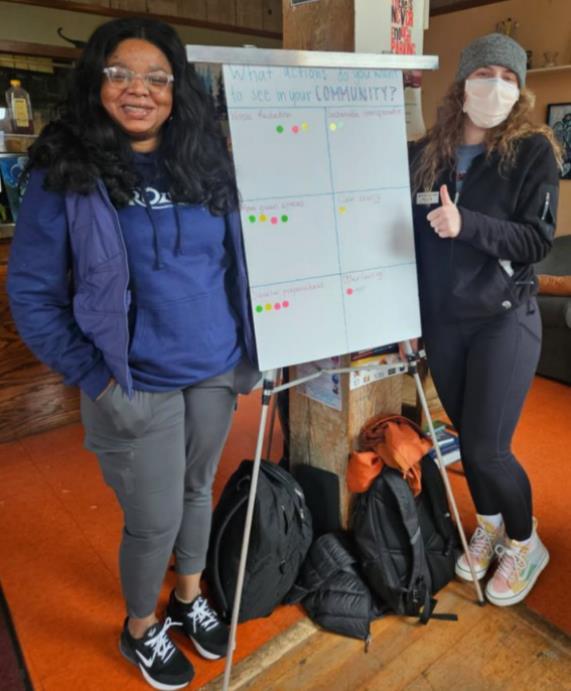
Distribution of interviewees and select quotes across Pierce County
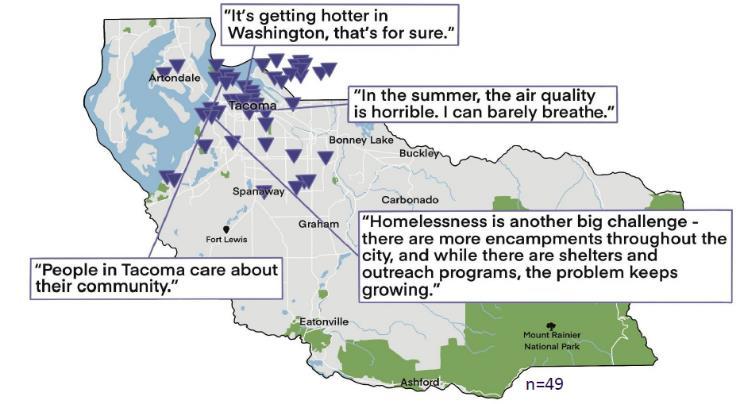
Summary of Interview Transcripts:
What is going well in your community?
Top themes: Safety and sense of community and culture
Supporting quotes:
“Fairly clean, lots of hiking trails, lots of good green spaces to enjoy .”
“Tacoma is a very diverse community in both cultural history and modern development. Recently the community has seen improvement in transportation such as the T-line and community initiative programs that benefit low-income families and safe youth campaigns.”
“There is a lot to do if you are social.”
What challenges is your community facing? Do you have any stories or experiences about environmental challenges in your community?
Homelessness and safety Extreme heat and air quality
“I wouldn’t say things aren’t going well, but there’s always room for improvement. We have a high number of homeless people in the area, and porch theft has become increasingly a problem for us. It’s a great neighborhood to live in, with a lot of diversity and culture, but we lack resources for the unhoused individuals within our community.”
“There are very few places to buy groceries, and the ones available often have limited stock. I just want access to regular grocery stores without having to go to Metro Market and pay extra.”
“Over the past year, violence is more prominent. It's weird, there are more kids with guns, young people reckless driving through the neighborhoods. There are lots of kids and not enough green spaces, only streets. So you have to stay inside. The streets are not safe.”
“We get a lot of smoke. Can’t really sit out on the deck in the summer. It’s a lot warmer than it used to be.”
“In the summer, the air quality is horrible. I can barely breathe. Some days, I can’t even enjoy being outside because my allergies are awful. I’m not sure if it’s the smoke from the wildfires or the pollution in this area".
“The summer heat wave outside. Too hot to go outside but homes don't have AC because of the climate. It would be nice to incorporate more ACs into homes and to have outside cooling spaces.”
ORCA staff engaged community members in many ways at events, community meetings, and public workshops. Using a variety of strategies to gather community feedback ensures diverse perspectives and allows people to contribute in ways other than traditional surveys or public comments. Staff have used dot boards, visioning exercises, and other creative ways to elicit feedback. See down below for examples of different engagement methods used during the 2025 Update to the Sustainability 2030 Plan .
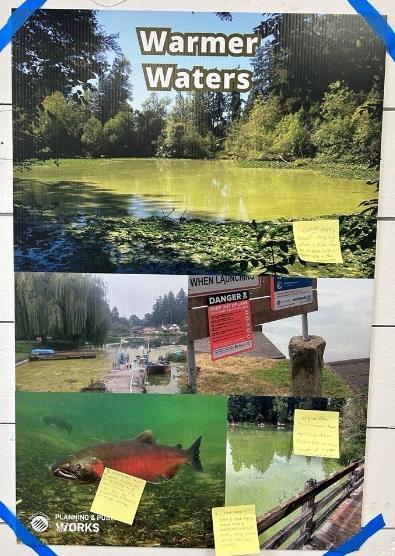
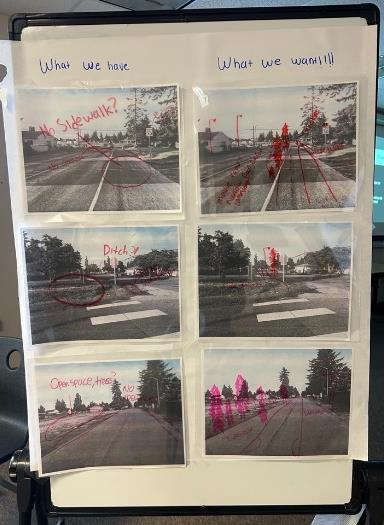

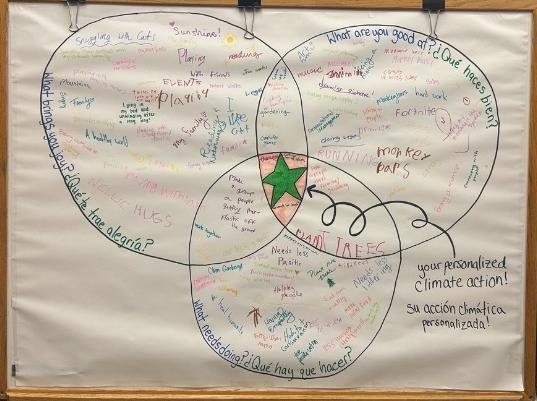

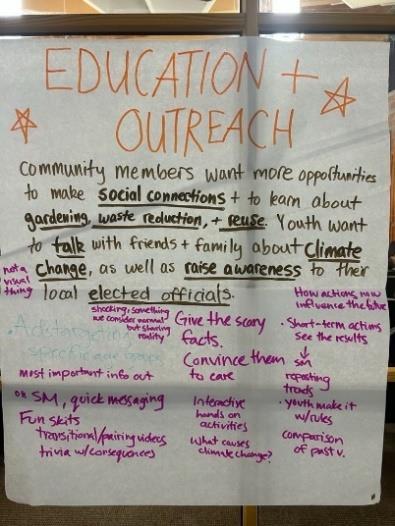
A sampling of engagement methods used by ORCA staff.
The main dot board question asked at community events was, “How would you like to contribute to climate action?” Feedback generated from this question will help ORCA staff align educational programming and other engagement opportunities with community interests and priorities. The table below outlines the number of responses for each topic at various events. Get Involved with a Local Organization was the top ranked way to contribute to climate action.
How Would You Like to Contribute to Climate Action Dot Board results table :
Learn more about the impacts of climate change
Get involved with a local organization
Write a letter to my local council members Have conversations about climate change with friends and family
Other write -in responses:
• Actually plant trees in my yard!
• Continue to educate and learn
Next steps
New actions in this Plan update have been influenced by community feedback and will expand opportunities for community members to be involved in and lead their own solutions. With more staff capacity and community support, we can increase deep and meaningful participation in climate action. ORCA staff will continue to work with community partners to implement existing and new Plan actions. Much of the community feedback we received is also relevant to the work of other County divisions and departments, and we are working to share feedback with the appropriate groups .
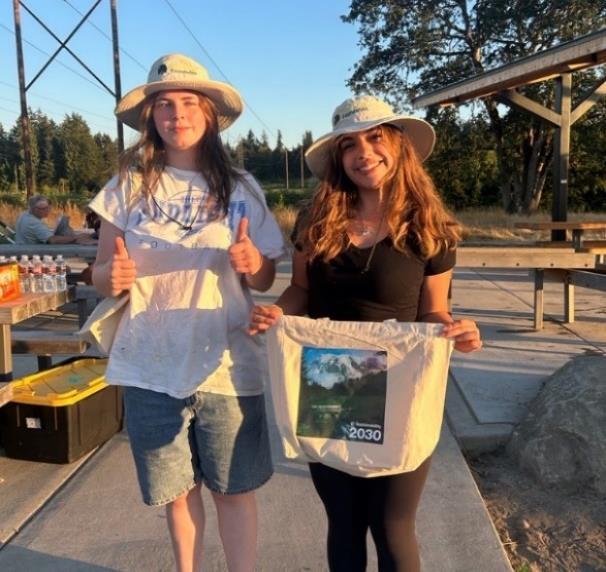
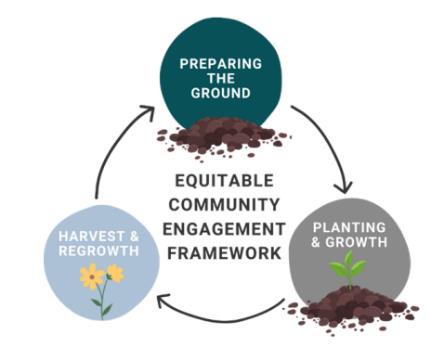
With the restructuring of our newly named Office of Resilience and Climate Action comes an opportunity to expand and deepen our equity work across the larger Planning and Public Works Department. The Equitable Community Engagement Framework was created during our 2023 Plan update to guide our team’s community engagement efforts. Since then, the framework has been shared internally with other County divisions, as well as externally with other jurisdictions across Pierce County. The framework has three sections and has been recently updated to reflect new actions taken/progress made To see the full framework, please visit this link.
Build an understanding of power and a shared language:
• Onboarding new staff members and enrolling them in the Urban Sustainability Director’s Network Equity Foundations
2.0 training.

Bilingual Recycling Worksh op with the Latinx Family Advocacy Program
• In 2024, Pierce County offered a new tribal training session called Weaving Together Our Story . The training was led by Willie Frank III as he shared his understanding and lived experiences as a fisherman, an elected leader, and advocate for protecting treaty rights and the salmon we all want the next seven generations to see and enjoy. Many ORCA staff participated in the training, and we will continue to enroll staff as more sessions are offered.
Invest in trust and relationship building:
• ORCA staff continue to regularly attend community meetings to better understand community needs and how to address them in the Sustainability 2030 Plan.
Get to know and prioritize frontline communities:
• ORCA staff have been working with various community-based organizations to offer tailored workshops and events. Examples include hosting a Latine Conservation Week event with the Tacoma Tree Foundation and Caminemos Juntos, Bilingual Recycling Workshop with the Latinx Family Advocacy Program, Climate Change Walk in the Park with the Pacific Islander Health Board of WA, and more.
Develop and use tools for equitable engagement:
• The Equity Assessment Tool, which can be found here, continues to be used by ORCA staff and has been circulated with other County departments and divisions. The tool is currently being used on Sustainability 2030 Plan Community Priority Actions. Desired equity outcomes for each Plan strategy can be found starting on page 21 in the Plan.
• ORCA’s Equitable Community Engagement equity workgroup developed pre- and post- event rubrics to document engagement events across Pierce County. This allows us to examine geographic gaps and opportunities for engagement.
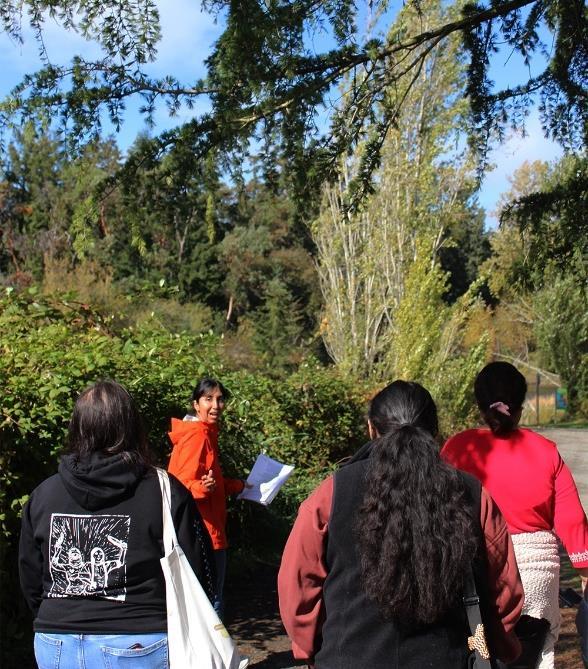
Change Walk

Establish accountability, evaluate impact of engagement practices, and share and celebrate successes:
• The Community Priority Actions webpage was established to keep our community updated on Plan actions they indicated are most important to them.
• The pre- and post- event rubrics mentioned in the section above also help us better understand the type of engagement we do at events and how to improve. We are evolving from simply sharing information with our community to crafting opportunities for community-driven solutions.
• Three equity workgroups were established in 2022: Budget, Assessment, and Data; Equitable Community Engagement ; and Internal Education and Training. We annually assess these workgroup’s progress and efficacy, and we have regrouped as our office has grown. With the restructuring of Planning and Public Works, we are currently assessing how to accommodate new staff and exploring options to expand the workgroups.


Distribution of tabling events attended, and workshops hosted by ORCA staff from 2023-2024. Green markers indicate 2023 events, b lue markers indicate 2024 events, and purple markers indicate Environmental Education programs.
Comment # Public Comment Received
1 In my opinion, a high level plan needs to be tied to actions and tactics with a timeline. Data also needs to be collected to ensure when course corrections are needed.
My concerns for Pierce county are the following, asphalt is continuing to be poured as a street surface in almost any Street. I drive down within Pierce county. We know asphalt is 40 to 60° hotter than the air temperature during the summer. Asphalt collects the sun rays during the day and releases them at night. We know from the last workshop Pierce county did that more people die in the United States from heat than any other natural disaster element. If you Google Phoenix and they're burn ward you can see a story from a few years back that almost 100% of the burn Ward was patience that had fallen down on hot asphalt and sustained third degree burns. These were the elderly and children. We can do better than this. Any climate plan should be reducing asphalt and not increasing it like we are in Pierce county. We're also laying down artificial turf in the parking strips of many streets instead of planting trees. Artificial turfs can turn into nightmares when you are pulling them out. The lifespan and of artificial turf is not value added and increases microplastics. Please tie your vision to actual tactics and stop pouring asphalt that is outgassing in perpetuity and increasing the urban heat Island effect.
Lastly, it's important that when housing is built for people experiencing homelessness that they share a wall and we minimize our impact to our national forest. Stand-alone homes. Take a lot more resources than homes that are connected. In addition, we need to incentivize people that this is temporary housing and from the Data I've read more than 50% of people in temporary housing. Do not move out and turn it into permanent housing. This is not appropriate and I actually don't support any funding to go towards providing housing unless it's a family or young person or the elderly. White men in their twenties and thirties can get a job. They don't need to get subsidized ho using when they're the most entitled gender and race on this planet
2 Thank you for the update and the work that went into incorporating community feedback. Love that this is a living document that sees regular updates. In the nature based climate solutions ongoing strategies, it included connecting eco systems for example as in bio diversity corridors, but then there's no action that calls that out. And even though it's not a huge reducer in GHG emissions having an action (county or otherwise) that promotes electric landscaping tools would be lovely - healthwise better for the users of the equipment and also quieter. It fits under electric first, but isn't discussed. Very appreciative of the draft.
Pierce
The impacts added during prevention as an action resilient guidelines Additionally, green stormwater Solutions Housing Comments
Ongoing Solutions However, connectivity important Conservation Electrifying called out under off 2019. While on-road comment, incentives incentives.
3 I support your efforts No response.
Pierce County Response also needs surface than the them at States ward you had children. We we are instead of lifespan actual Island share is housing. Do support White when
Love that ongoing then having healthwise discussed.
The impacts of urban heat islands are a top community concern. EB Action 8: Extreme Heat Partnership was added during the 2025 Update to work with partners on a heat mitigation strategy which will include both prevention and response to extreme heat (page 26). While limiting the use of asphalt is not explicitly called out as an action in the 2025 Update, GCC Action 8: Climate Preparedness (page 38) does include the adoption of resilient design guidelines. Opportunities to reduce heat exacerbation should be considered in resilient design guidelines for road maintenance.
Additionally, "Expand Urban Green Spaces" is a key strategy of the Sustainability 2030 Plan. Actions to expand green stormwater infrastructure and urban tree canopy cover can be found in the Nature -based Climate Solutions section on page 32.
Housing is not directly addressed in the Sustainability 2030 Plan beyond increasing home energy efficiency. Comments related to housing and homelessness will be shared with Pierce County Human Services.
Ongoing climate action strategies, like "Protect, connect, & restore ecosystems" in the Nature -based Climate Solutions focus area, may not have specific implementation actions in this iteration of Sustainability 2030. However, while NCS Action 4: Land Conservation does not specifically mention habitat connectivity; habitat connectivity is essential to maintaining and improving biodiversity and ecosystem services and will be an important factor in implementing the Land Conservation Plan. For more information about the Land Conservation Plan, visit https://www.piercecountywa.gov/8371/Land-Conservation.
Electrifying county-owned landscaping tools is an ongoing program of the Electric First Policy and therefore not called out as a new action in the Plan. Emissions from communitywide use of landscaping equipment is counted under off-road vehicle emissions in the Greenhouse Gas Inventory. Off-road vehicles made up 4% of emissions in 2019. While their contributions to greenhouse gas emissions may be proportionately small in comparison to all on-road vehicles, their emissions have an outsized impact on the heal th of landscaping workers. In response your comment, on page 26, Energy & Buildings Action 4 E&B Resources has been edited to clarify that resources and incentives to adopt electric landscaping equipment will be included alongside other equipment electrification incentives. No response.
4 People matter. The earth is useless without people. No amount of money will resolve in changing the climate to the specifications of certain people who worship the earth but not God who created it. Stop wasting taxpayer's money on useless projects and HELP PEOPLE. No response.
5 I am pleased that this document begins by acknowledging the value of a strong relationship with local tribes in facing the threats to Pierce County posed by climate change.
I observe that the costs of climate disruption are unacknowledged or undervalued by elements in our community, those people who look for short-term profits at the expense of long-term economic stability. I applaud Planning and Public Works’ response in this document that proposes strategies and actions to benefit community-wide safety and livability.
Strategies proposed here are clearly based on comprehensive data collection, not wishes and hopes. Moreover, the proposed strategies will benefit our community even if there were no looming threat from greenhouse gas emissions and solid waste pollution. The 2030 strategies offer us both a healthier environment and a more predictable economic future.
Finally, the “nature-based” solutions are dear to my heart because this gives residents, not just governmental entities, a role to play: residents like me can learn how to engage in volunteer efforts that will expand areas of resilient, healthy landscapes and habitats here in Pierce County.
Lucinda Wingard, Gig Harbor
No response.
6 I am 100% against the Sustainability 2030 fake climate crisis agenda. No response.
7 Why don’t you have roads, utilities, and sewer depts. prioritize comparing yearly or even two year plan sharing. I know from watching Waller Rd being paved years ago and then the next year sewers come along and did sewer or water lines. Or about 2019 I went to an open house at the PC Skills Center and saw a scheduled stoplight for Military Rd and Waller Rd. Come 2020 Military Rd is torn up for months to put sewers from 22nd to 32nd (?). After receiving the notification I asked the letter writer if the sto plight would go in too, His reply “what stoplight?” Work on Kathryn Johnson Elementary was also beginning. When did the stoplight go in????? About a year later and the whole intersection was torn up! Could have been better for the environment AND our pocke tbook to do at the same time!!
Inter-departmental concern.
8 Why can’t Washington put the 10 cent fee on recyclables like Oregon? They’ve been doing it for at least 45 years? There is states, advocate reduction https://www.piercecountywa.gov/1585/Plans
9 Climate change has been a political ploy for more taxes, harsh regulations and only ends up costing the consumer in magnitudes more than what is claimed, or return from such foolish plans. It's a farse, a scheme for more taxes, and Washington citizens are tired of all the climate change nonsense that only benefits a small number of people who happen to be in the club pulling these strings. Scrap the whole thing. No response.
changing the it. No response. with local in our economic strategies hopes.
threat efforts
No response.
year sewers for 22nd to too, His the been
for at
No response.
Inter-departmental collaboration is essential to efficient resource management. Thank you for raising this concern. This comment has been shared with Department of Planning and Public Works leadership.
There is a long history of advocacy in Washington State to pass a bottle -deposit bill similar to programs in other states, but such a bill has never made it through the state legislative process. Pierce County will continue to advocate for state-level legislation to improve recycling. For more information on Pierce County's waste reduction efforts, see the Tacoma-Pierce County Solid and Hazardous Waste Management Plan: https://www.piercecountywa.gov/1585/Plans-and-Agreements. costing a farse, that Scrap the
No response.
10 Excellent Update!
Now we just have to insure to implement.
Continued and aggressive education and promotion particularly to those outside (the choir) is a necessity.
Many ofthe items addressed and are being worked on are issues the SWAC has been working o n. Thank you!
Stan Moffett
Key Peninsula SWAC member
KPFD16 Commissioner
Key Pen It Clean participant
11 To whom it may concern,
The issue of public safety comes to mind when carpooling is mentioned as a solution for reducing vehicle miles traveled. While money can be saved, depending on location, one may not know what a stranger or coworker would do when alone with them or at a very far distance. Also, there is the issue of human trafficking where transporting is part of forms of Trafficking. In that, many types of crimes can layer and make an individual or entire car unit become victimized putting them in a life threatening situation. This can include public transit as well, such as Pierce Transit, Around the Sound, Vanpools, paratransit services, and other ride-sharing options.
Sincerely,
Andrelyn Izquierdo Writer, Activist, Empowerment Blogger andrelynwriting.wixsite.com/website
No response.
No response.
Comment noted.
